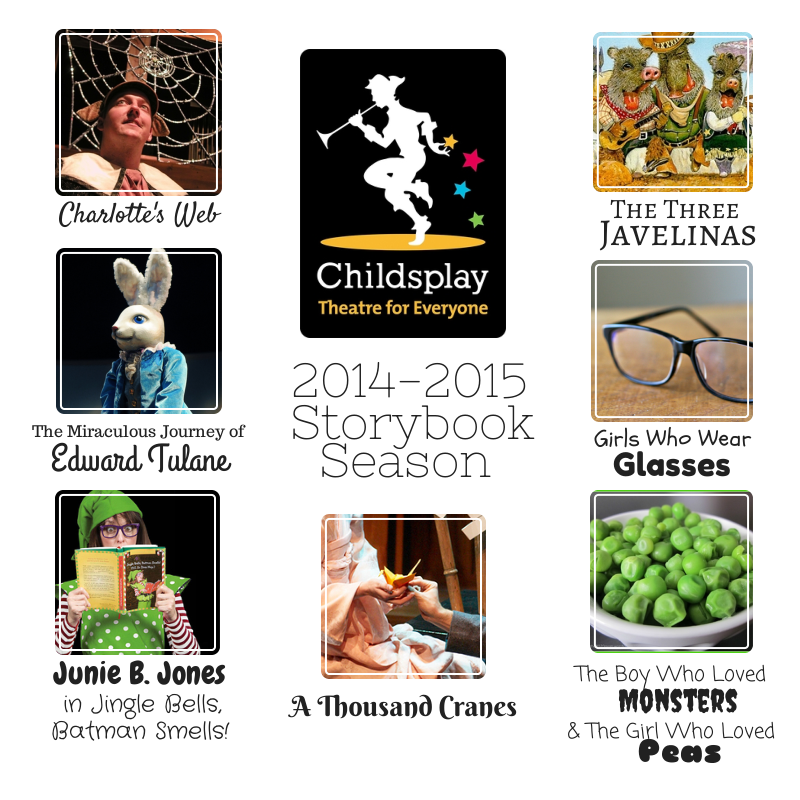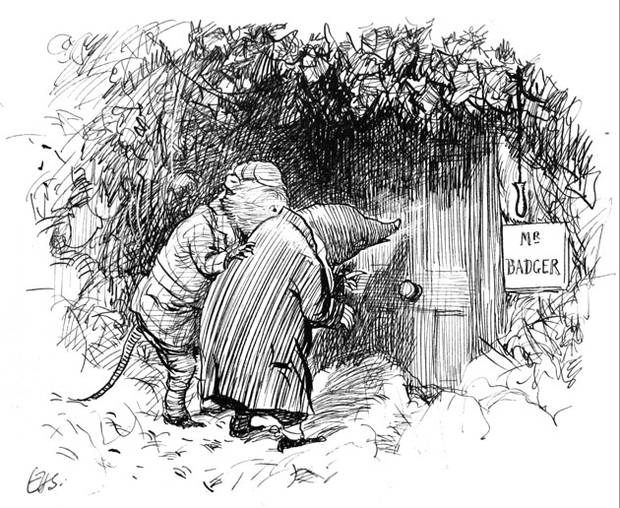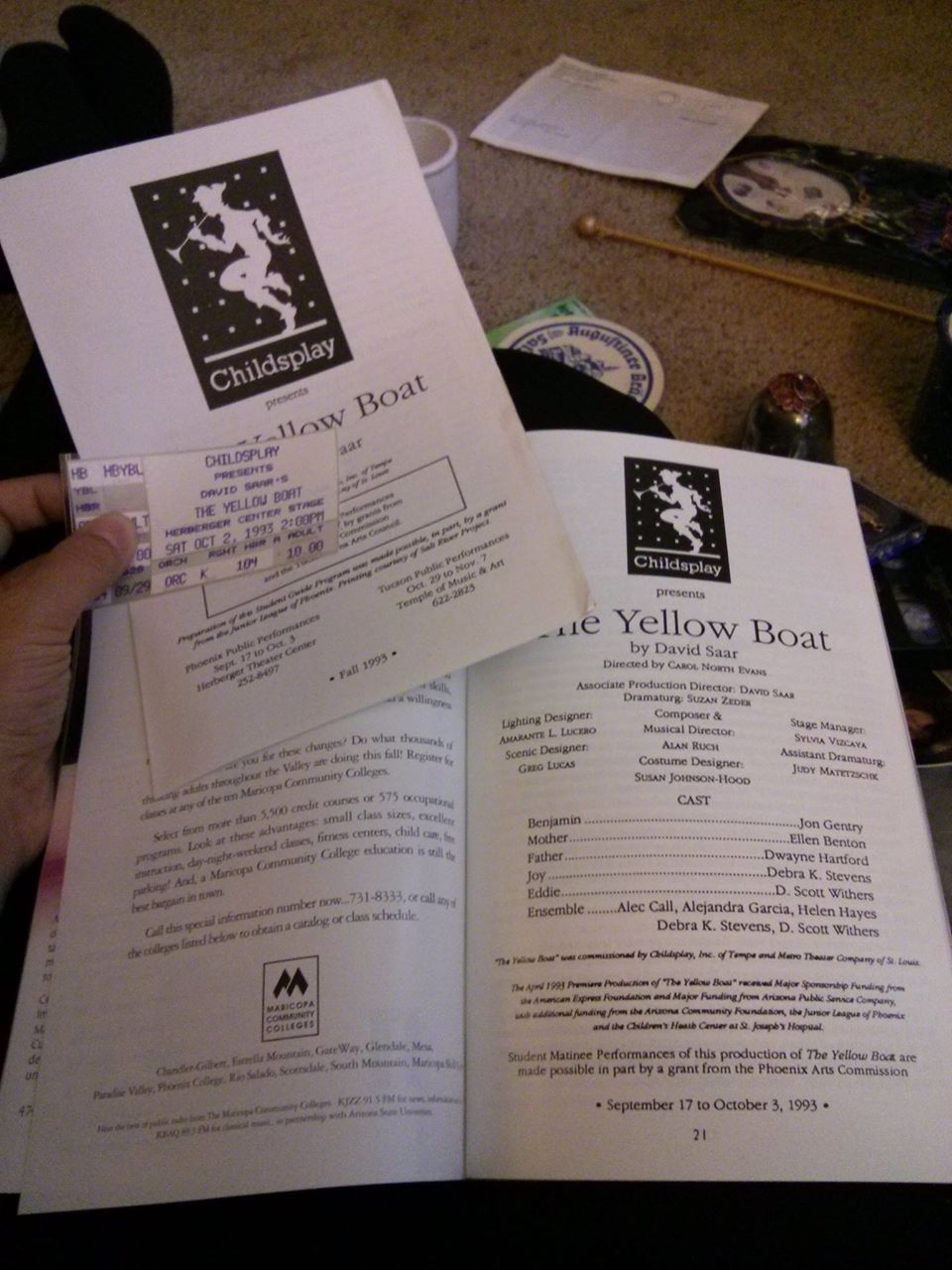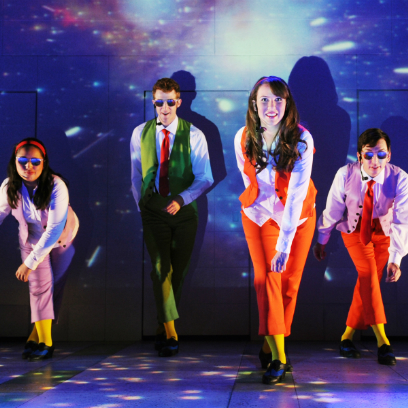
A CRITIC REMINISCES
For many people, 1977 sticks in the memory as the year Star Wars premiered. Not for me. It will always be the year that one of the world’s great theatrical institutions was born.
Right here in the Valley.
I had just been hired as entertainment editor at the Scottsdale Daily Progress when Dr. Lin Wright, head of the children’s theater program at Arizona State University, called.
“You have to meet David Saar.”
David was this tall, lanky Nordic guy. He had presence, that’s for sure. It didn’t take me long to learn he had a passion, too. Theater for Young Audiences.
You notice I didn’t say children’s theater. David wanted more than that. He wanted to introduce young people (well, yes, most of them children) to intelligent, thoughtful, colorful, magical, life-altering theater.
His company would be called Childsplay.
Unlike most of the theaters catering to youngsters in Phoenix at the time, Childsplay featured adult actors performing for children. David received some flack for that. He persevered.
Today, no matter where you go in the world, if the subject of theater for young people arises, the name of Childsplay is recognized and revered.
If sometimes I feel like its adopted father, forgive me. I was here for the birth, reported on its early successes, occasionally wrote of its problems and lived to see its triumph and I am damned proud of it.
It would take a book to encompass the history of Childsplay, and a better writer than myself. But I have my memories. Those early years, when Wiley and the Hairy Man and Montana Molly and the Peppermint Kid seemed to be part of every season. Christmas of 1988, when the company premiered its version of The Velveteen Rabbit. The show became a Valley holiday tradition and ran for so many seasons that older children in the first audiences were bringing their own children to see it.
There was the season of 1992-1993, which I will always think of as the most heartbreaking year of my career as a critic. It was the season David premiered The Yellow Boat, a play he wrote in tribute to his only child, Benjamin, who died from complications from a bad blood transfusion. How I sat through that first production, I have no idea. I knew Benjamin. He was the best and brightest. I bawled like a baby.
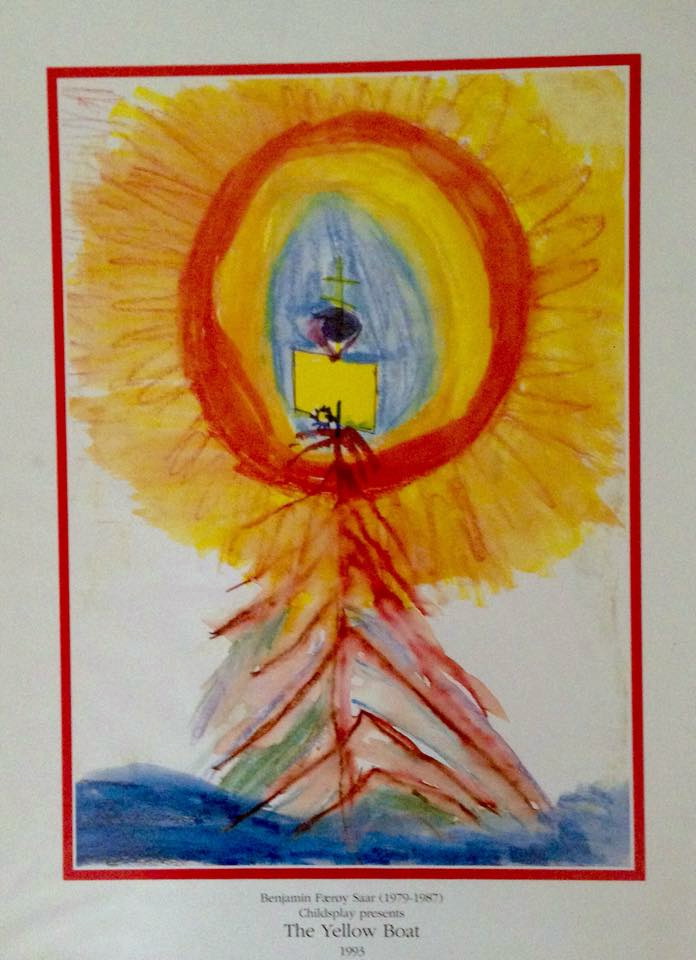
The play has gone on to become one of the most performed plays for young audiences in the world. There is some comfort in knowing that Benjamin will never be forgotten.
Many actors have graced Childsplay’s stages through the years, too many to list here, or, if I’m honest, so many I’m afraid I would forget someone. But four will forever embody the company to me: Jon Gentry, Katie McFadzen, Debra K. Stevens and D. Scott Withers.
So many images flickering in my mind. Katie as Junie B. Jones, Debra crawling across her spider’s web in Charlotte’s Web, Scott as Nana in The Velveteen Rabbit, surely the most famous dog to appear on a local stage.
And Gentry? He is our Chaplin, our Danny Kaye, our Jerry Lewis, our Fernandel, our Erroll Flynn, our Kevin Spacey. So many talents. Childsplay has, and still is, making use of them all.
So many other images, too. Gro Johre’s magical sets (it could never get better, anywhere, on any stage than The Highest Heaven). Connie Furr-Soloman’s and Rebecca Akins’ exquisite costumes and masks. The sheer magic of Selkie, a play about a young woman who discovers a creature out of legend. The utter delight of A Year with Frog and Toad.
And I did I say “intelligent” and “thoughtful” plays. Over the years, Childsplay introduced its audiences to The Miracle Worker, Romeo and Juliet, The Secret Garden, The Belle of Amherst and The Cherry Orchard. Yes, that Cherry Orchard!
In a way, that sums it up. David Saar had a dream. He made it a reality – then took it to a level beyond even his wildest imagination.
Childsplay. Our gift to the world.
Read more about Childsplay HERE
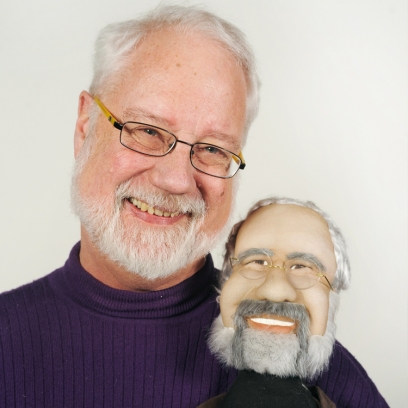
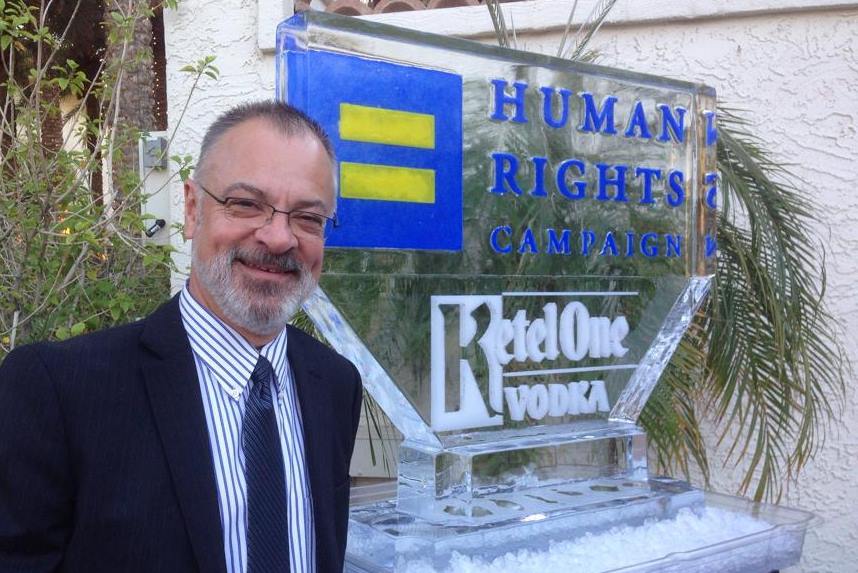
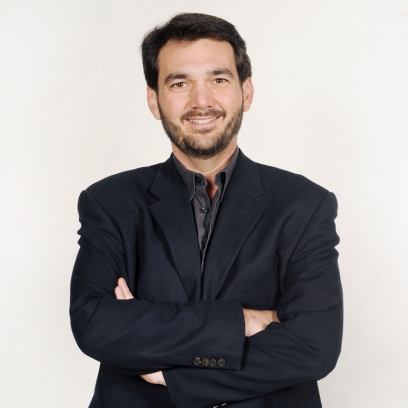


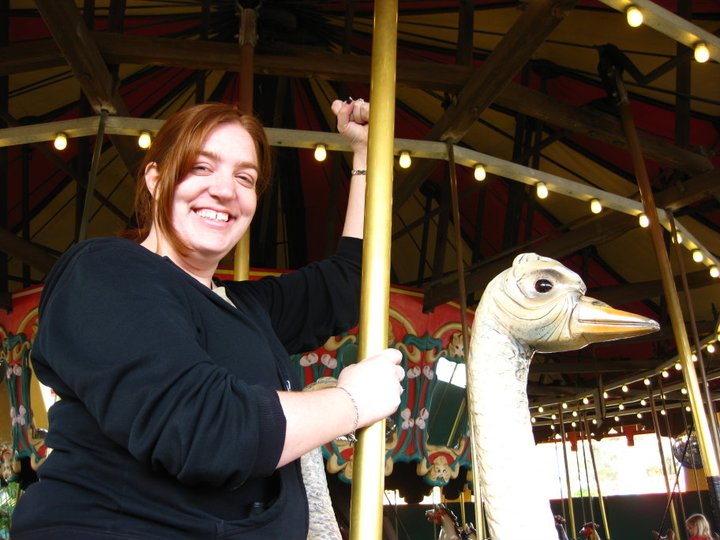

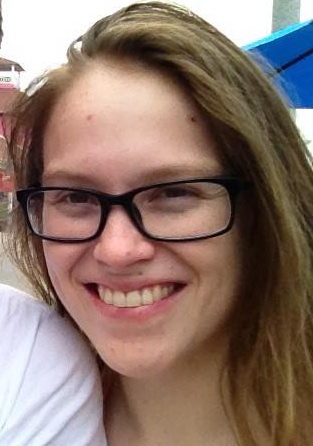

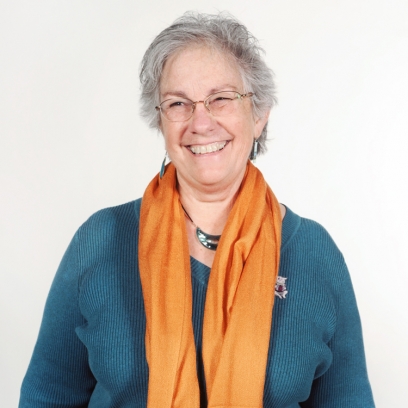

A TRIBUTE TO AN OLD FRIEND
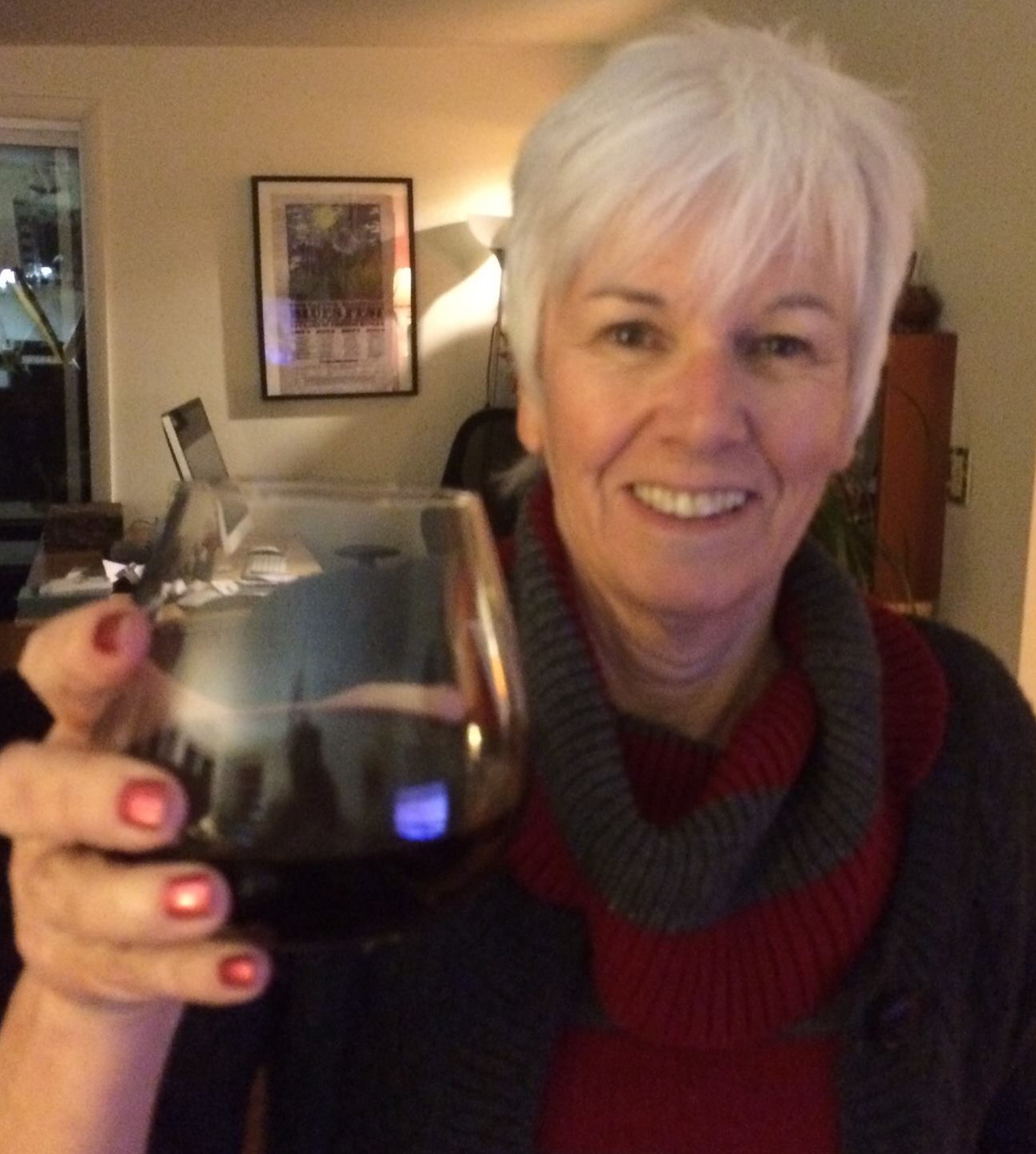
During much of my run as a theater critic for the Phoenix Gazette and the Arizona Republic, Rosemary Walsh was the public relations director for Childsplay. They didn’t get any better than her. I once penned a “mash note” to her, which I’m reposting. I meant every word of it, and still do.
“Rosemary Walsh, whose work for Tempe’s Childsplay did much to gain that company a reputation as one of the nation’s finest theaters for young audiences, once told me that her job was to see I had what I needed to do my job and then let me do it. That said, she made a promise: Never to suggest something that wasn’t a really a story. “If the story isn’t any good,” she explained, “it won’t do Childsplay any good.” I was so impressed with that comment, I wrote it down in my notebook, where it remains, heavily underlined, to this day. And, in truth, she never broke that promise – not even once.”
There’s only one thing wrong with the picture above. We should be lifting a toast to her!
THE ARTISTS
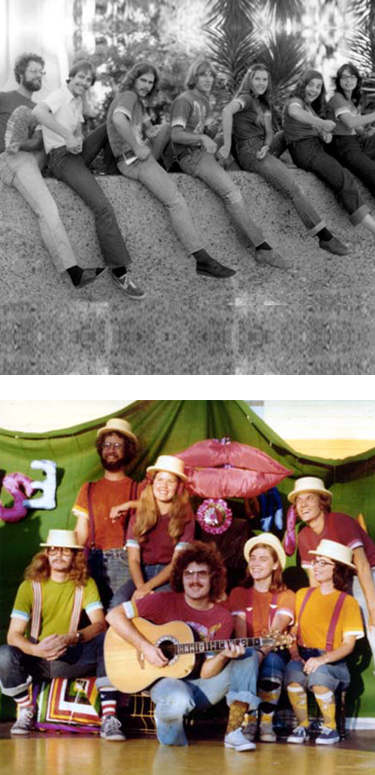
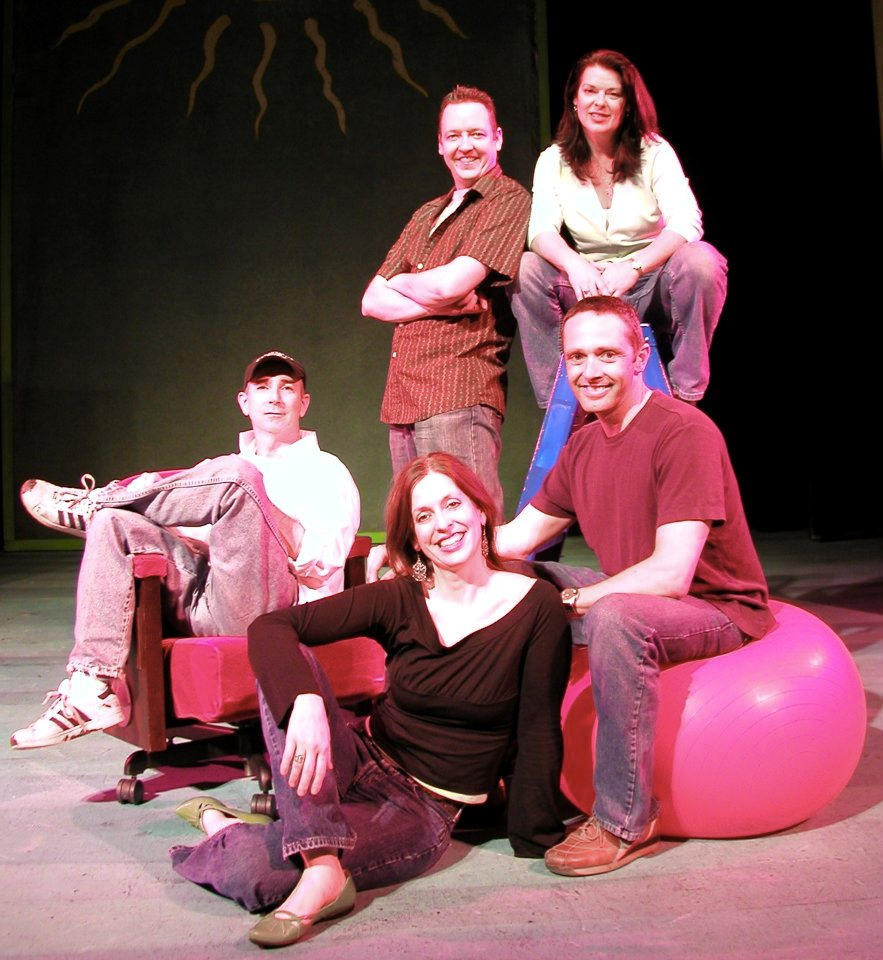
KYLE LAWSON VISITS A REHEARSAL OF ”THE WIND IN THE WILLOWS” IN 1999 AND SAYS AN EARLY GOODBYE TO AN OLD FRIEND.
Some folks call the rehearsal space at Childsplay a shoe box.
Really, it isn’t that nice.
The room doesn’t have the decency to be a rectangle. It wanders about, bulging to accommodate some cabinets, squishing in to make room for a piano, zigzagging here and there just for the heck of it.
The ceiling? Well, don’t look for architectural discipline there either. The untidy mass of exposed duct work, air-conditioning vents and industrial-strength tubing looms over the performers like an avalanche waiting for a shout.
The place hardly seems conducive to the making of magic.
Shows you how little environment matters.
Carefully avoiding the pieces of tape that stage manager Marie Krueger-Jones has placed on the floor to mark the location of Gro Johre’s sets, a trio of Childsplay actors work through an intricate dance routine while raising their voices in song under the watchful gaze of director Graham Whitehead.
They are oblivious to the reality of the hall. They’re in a stately English home, not far from a stately English river. Anyway, who can worry about looming duct work when Mr. Toad (suddenly appearing from stage left) threatens to take that infernal motorcar of his out for another spin? He already has smashed half the village. In the words of their song, it is time for his friends to Take Charge.
In the few minutes you’ve been watching, something else has taken charge. Your imagination. You’re in that house, hearing that river lap against its banks. Childhood memories of sneaking a flashlight under the covers and reading Kenneth Grahame‘s The Wind in the Willows while your parents slept the good sleep come flooding back.
Your eyes tell you that this is just a run-through of the company’s season opener, a musical version of Grahame’s beloved classic that makes its debut next Sunday at the Herberger Theater Center. Jon Gentry, Katie McFadzen, Kristen Drathman and D. Scott Withers are actors dressed in outfits that may have cost a week’s salary at the mall but still look as if they came from some particularly eclectic thrift shop.
Your eyes tell you this. Your heart says it is Mole, Rat, Badger and the quixotic Mr. Toad.
Your heart is right.
Childsplay’s people can be anything they want to be, anywhere they want to be it — in this awful room, in a school cafeteria in the White Mountains; it makes no difference. Their ability to transform themselves, to transport their audiences to worlds distant in time and place, is the reason the Tempe company is consistently numbered among the nation’s finest children’s theaters.
One of the reasons, anyway.
Another cause of Childsplay’s success also watches the run-through.Managing director Gary Bacal stands against the wall, trying to look as inconspicuous as a big man can. More accurately, that title is soon-to-be-ex-managing director. Bacal has announced he is leaving the troupe at the end of this month. A decade of commuting from his home in Tucson has left him exhausted.
When he entered the theater earlier, one could see the actors follow him with their eyes. The expressions were raw, confused. No one is sure how to deal with this. Childsplay without Bacal is almost as unthinkable as Childsplay without its founder and artistic director, David Saar. Most of the company is in a state of denial. Don’t talk about it and it won’t happen.
Bacal’s emotions are equally confused. Watching the performance, he comes across as exactly what he is, a football jock who’s put on a few pounds with the years. He also looks like a sentimental softie. You don’t have to be standing next to him to catch the misty glint in his eyes. The Childsplay actors work their magic on him every time.
Can he leave? How could he leave?
The questions linger as he returns to his office across the courtyard from the theater. Office? To call Bacal’s work area a cubicle is to give a cubbyhole delusions of grandeur. The Childsplay team seems to work best in chaos. The more limited the space, the more cluttered and disorganized it is, the more art gets made.
Bacal flings himself into a chair. He runs his hand through the shock of thick, dark brown hair and confronts the truth.
“I’m not sure I really want to leave,” he says. “I’m just so tired. Maybe I’m throwing the baby out with the bath water. What if there were a different way to approach this job and not be so tired?”
He reflects on the rehearsal of The Wind in the Willows.
“What can I tell you about the joy I get from hearing them sing and watching them dance? It’s like — I don’t know if I can really explain this — it’s like pounds of pressure disappear. But how will I tell my wife? Yesterday, she said to me, ‘For the first time in years, you look rested.’ I haven’t talked to David, either. It’s complicated. I’ve said my decision to go is final. I could change my mind, I guess. I don’t know.”
The phone rings. As if he had intuited the conversation, it’s Saar calling from London. He’s been visiting family in Norway; today, he and his wife cruised the Thames and checked out the British capital’s bookstalls, looking for scripts and theater memorabilia.
“I just hope we have some extra room in the suitcases,” he says. “We’re going to need it.”
Given Bacal’s remarks, it seems an appropriate time to ask Saar about his feelings on the resignation. Until the men talk, Saar must take Bacal at his word. But there are overtones in his response that suggest he would not be adverse to a change of mind.
“I don’t think I can express how much we will miss Gary,” Saar says. “He has played a critical role in the success of Childsplay. “We get the ideas, we explain the ideas to him and he figures out a way to make sure the resources are there. He has been the enabler in so many diverse ways, not all of them financial. First and foremost, he has been a partner.”
Saar founded Childsplay 23 years ago; Bacal, who joined the company in 1989, has been managing director only since 1991. But he has overseen profound changes in the troupe’s operation. The annual budget has increased to $1.5 million from $325,000. A strong employee benefits program is in place.
Directors and designers are paid and five actors are on 12-month contracts, making Childsplay the only true repertory theater in the state.
“This is one of the few places where you have the opportunity to grow as an artist and also participate in the artistic growth of the company — and, at the same time, make a decent salary,” says Gentry, an 18-year Childsplay veteran who recently realized a long-held ambition to purchase a home.
“This company is great because it is not afraid to take risks . . .”
He looks at Bacal. “And because we are less likely to be told ‘no.’ ”
Bacal accepts the compliment, but hastens to qualify it.
“At some point, it’s always going to be about money — but the money is important only because it makes the art happen,” he says. “Without David and the people who work here, there would be no art. I’ve always realized that I’m around simply to see that their visions reach the stage. That’s not a problem for me. I believe in those visions as strongly as they do.”
Only a handful of Phoenix theater companies have lasted a quarter century. Fewer still have survived with their artistic goals intact. Saar and Bacal can take credit for that.
“Twenty-three years ago, my vision ran to about three shows ahead,” Saar says, chuckling. “But I knew what I wanted. I wanted the joy of creating something with people who felt the way I did. Gary helped make that possible. The scope of our productions has increased, but we still are a company of artists with a shared vision. I think I said that Gary and I were partners. I should emphasize that it has been a partnership of equals.”
The success has not been without its disappointments.
Bacal feels the Valley is unaware of Childsplay’s national reputation, or if it is, isn’t overly impressed.
“You might think it would be easy to obtain financial support for the kind of work we do, but I will never forget the corporate leader who told me that his company would fund us only at a certain level because ‘you are a children’s theater and you will never be more than that,’ ” Bacal says.
“In the night, when you can’t sleep, you think about things like that. Maybe we’ve been too busy to tell our story, or haven’t told it as well as we ought.”
Saar’s disappointment comes in the response of some adults to the company’s choice of material.
Last season, Childsplay had an artistic success with The Highest Heaven, a drama commissioned from Hispanic playwright Jose Cruz Gonzalez. The plot contrasted the migration of monarch butterflies with the passage into adulthood of a Mexican-American boy who was separated from his parents after they were deported from their California home during the Depression.
Johre’s beautifully abstract sets, Amarante Lucero’s magical lighting, Saar’s direction and the acting of the Childsplay ensemble resulted in a work that enthralled and moved its young audiences without ever sugar-coating the harsher elements.
The company received criticism for producing a work that was too complex for children.
“Some people take the approach that children’s theater should be all sweetness and light,” Saar says. “It shouldn’t confront real issues and it should never, NEVER run the risk of being over the kids’ heads.
“Obviously, I don’t believe that, nor do I think most young people believe it. Children are aware of what’s happening around them, they think about it and they have questions. At Childsplay, we promote the importance of a positive thought process, and the possibility of a positive outcome. Instead of whitewashing the world, we present issues in a manner that leads to discussion and understanding.”
Adds Bacal: “If you could see what happens in those cafeterias around the state, if you could sit in on one of the school performances at the Herberger or the Tempe Center for Performing Arts, if you could read the letters we receive from the kids, and from parents and teachers, you’d know why I keep getting in that car and driving up here.
“I believe children deserve the chance that theater offers them. It can change their lives.”
Well, it seems that Saar’s right about one thing. It’s a shared vision.
Now, if only they can work out the transportation.
-30-
CAST & CREW LISTS
If you have programs or information on these, please scan and send it to the website via Facebook private message or the contact button above. Thank you.
JANUARY 2014. “The Cat in the Hat.” Director: David Barker. Cast: Debra K. Stevens, Kate Haas, Katie McFadzen, Ricky Araiza, Rudy Ramirez, Rebecca Duckworth.
PHOTOGRAPHS
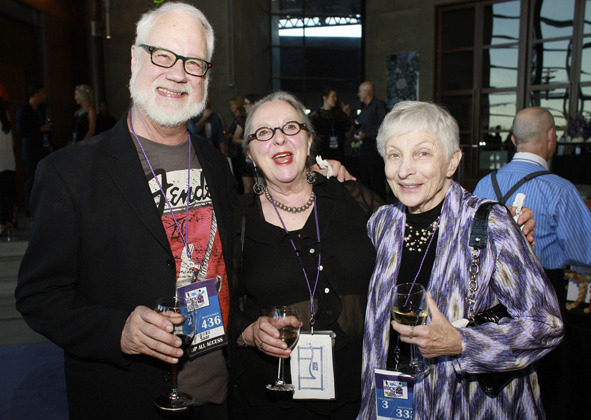
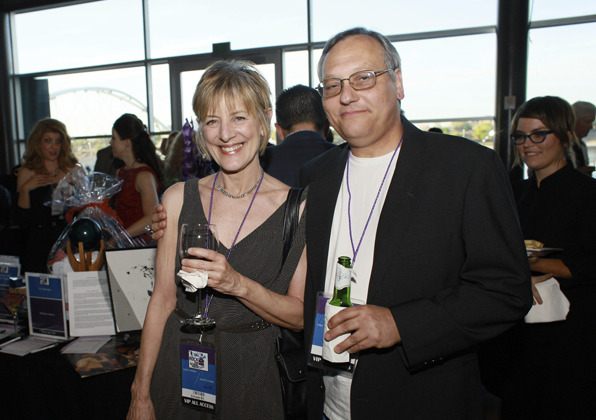
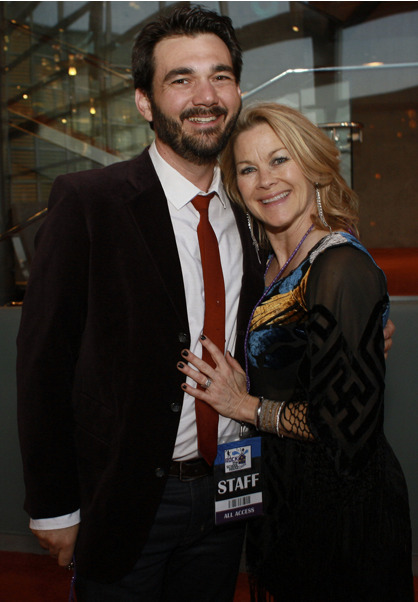
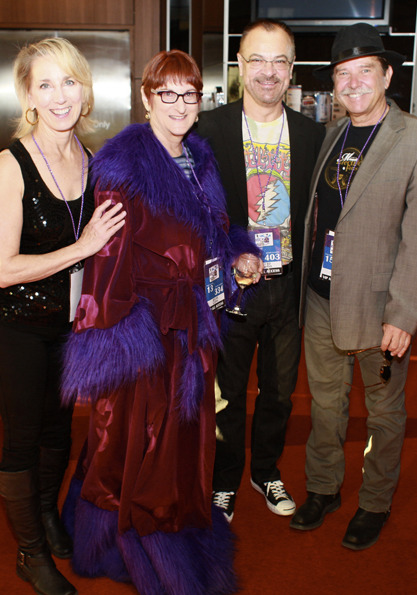
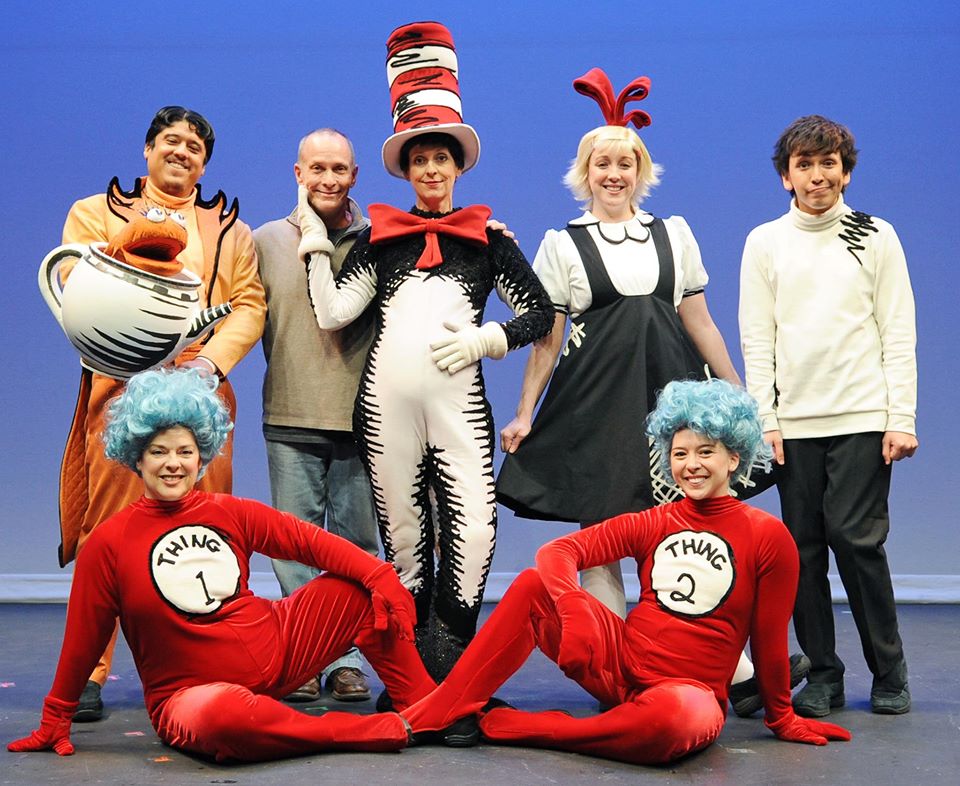
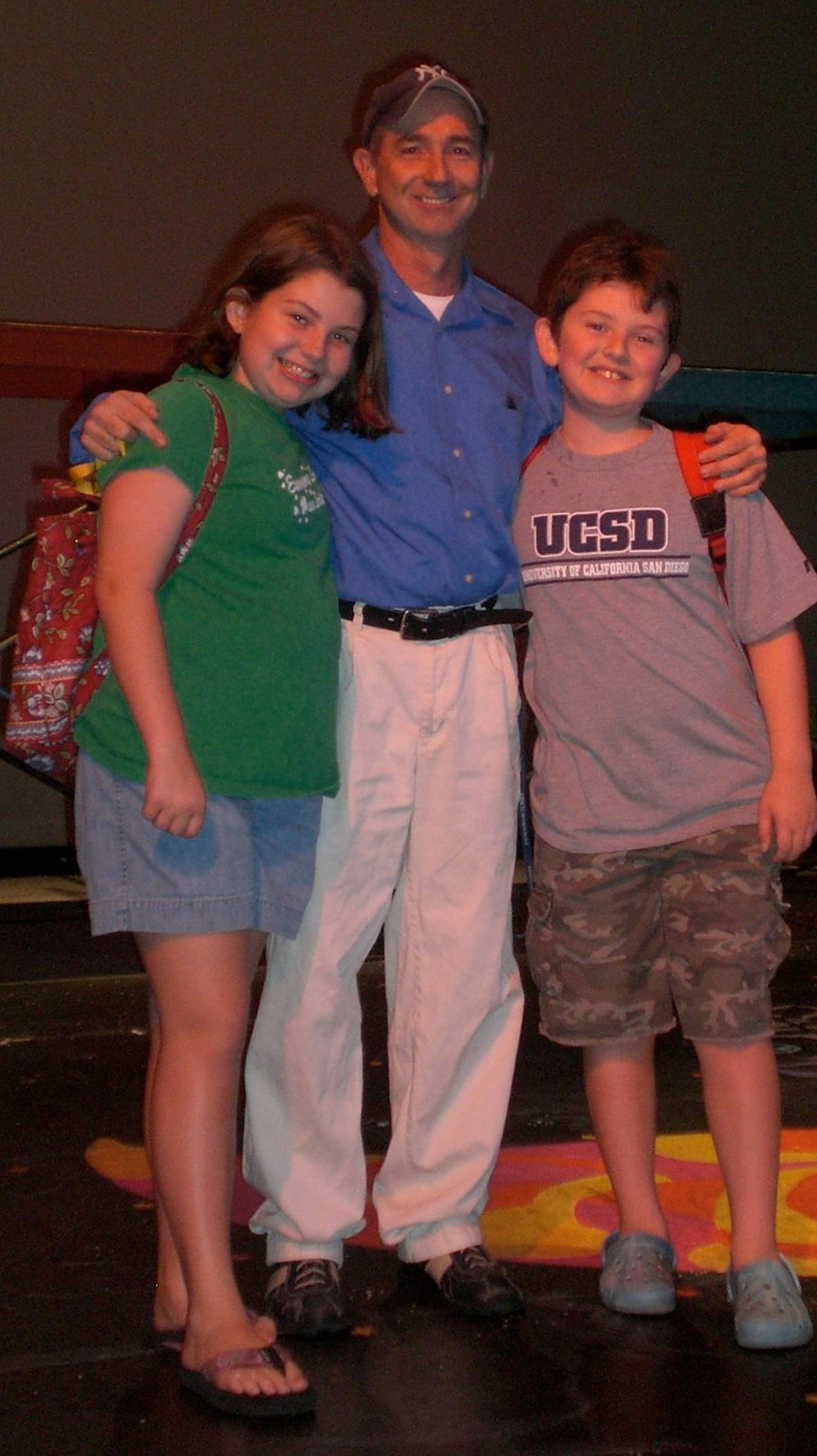
REVIEWS
“It is fun to have fun, but you have to know how,” opines the mischief-making feline in “The Cat in the Hat.” And there is no doubt that Dr. Seuss’ beloved storybook character has come to the right place when he takes the stage in an adaptation by Childsplay, which has been perfecting the art of having fun for more than 35 years.
This particular version of “The Cat in the Hat” comes via Britain’s National Theatre, where it premiered in 2009. It was directed by Katie Mitchell, who’s known for her avant-garde adventures, so it came as a bit of a surprise how thoroughly faithful it was to the book.
Childsplay’s production at the Tempe Center for the Arts follows suit with a minimalist set and graphical costumes that re-create Dr. Seuss’s black-white-and-red illustrations right down to the texture of the paper. The text also comes straight from the book as the cast recites Dr. Seuss’ rhymes and brings the story to life with the help of cartoonish sound effects and a jazzy soundtrack that adds Mancini-esque energy to the proceedings.
The cast, under the direction of David Barker, hits all the right notes. Katie McFadzen strikes a slyly dapper figure in the title role, while Debra K. Stevens and Rebecca Duckworth turn the mischief volume up to 11 as Thing 1 and Thing 2. Kate Haas and Rudy Ramirez are charmingly childlike as Sally and Boy, and Ricky Araiza is amusingly skittish as the goody-two-shoes Fish, whose warnings of impending disaster fall on deaf ears.
Running about 40 minutes, “The Cat in the Hat” is probably too straight-ahead for kids older than 10, but for the youngest theatergoers — and for moms and dads who fondly remember reading the book with their own parents — it’s just about perfect.
2007. “Petite Rouge.” Director: Dwayne Hartford. Musical Director: Alan Ruch. Choreography: JoAnn Yeoman. Scenic Design: Kenton Jones. Costume Design: Rebecca Akins. Lighting Design: Michael J. Eddy. Sound Design: David Temby. Stage Manager: Sam Ries. Cast: Yolanda London, Michael Arbuckle, D. Scott Withers, Lisa Fogel, Katie McFadzen, Jesse Havea.
Mike Artell’s book Petite Rouge: A Cajun Red
Riding Hood comes to life in a foot stomping, red
hot musical production.
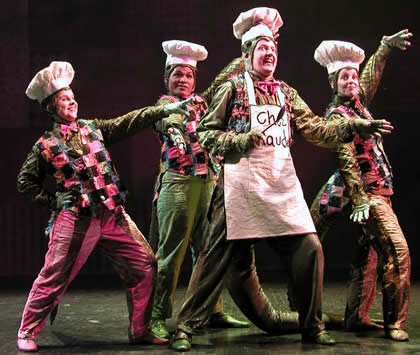
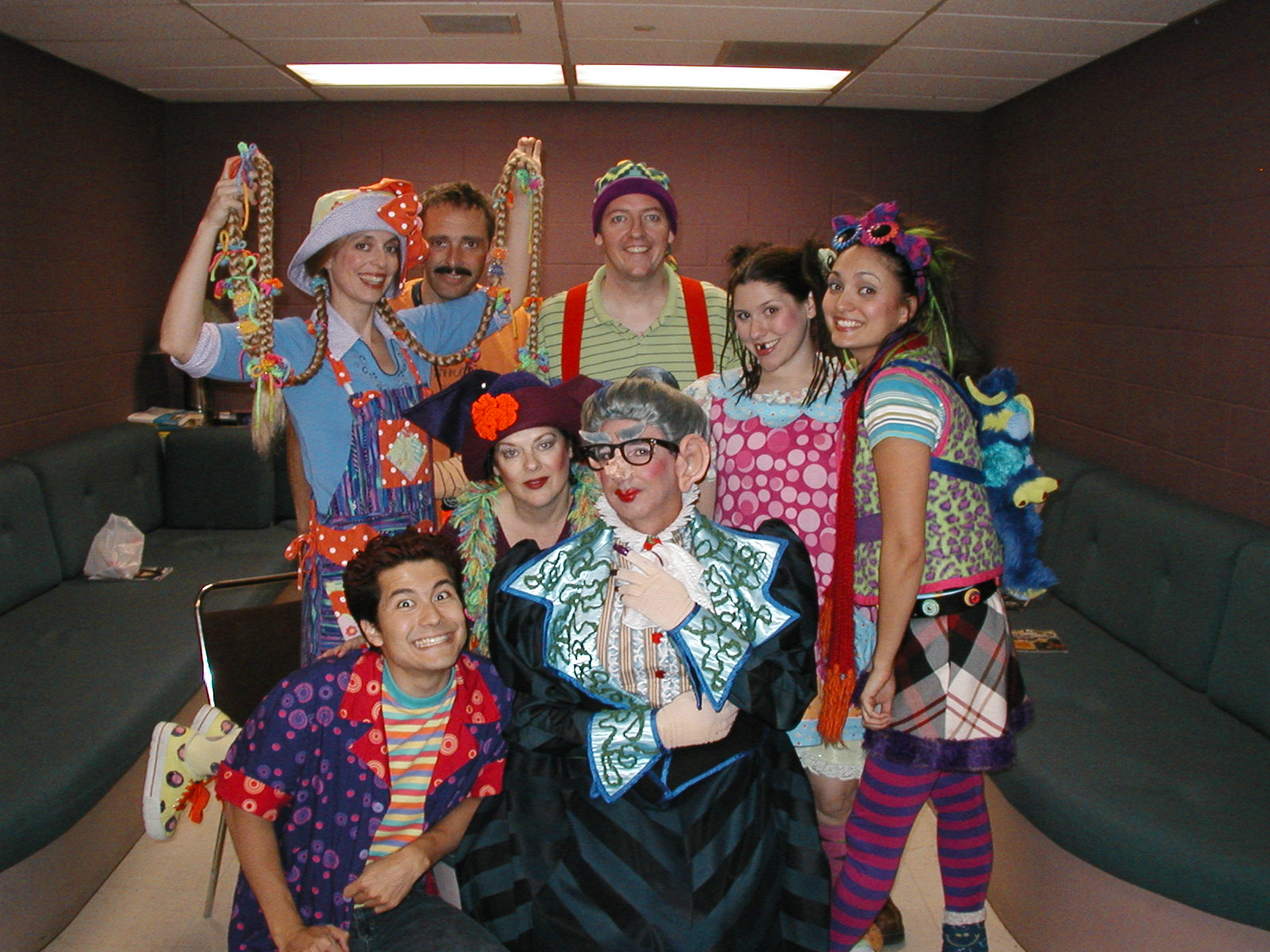
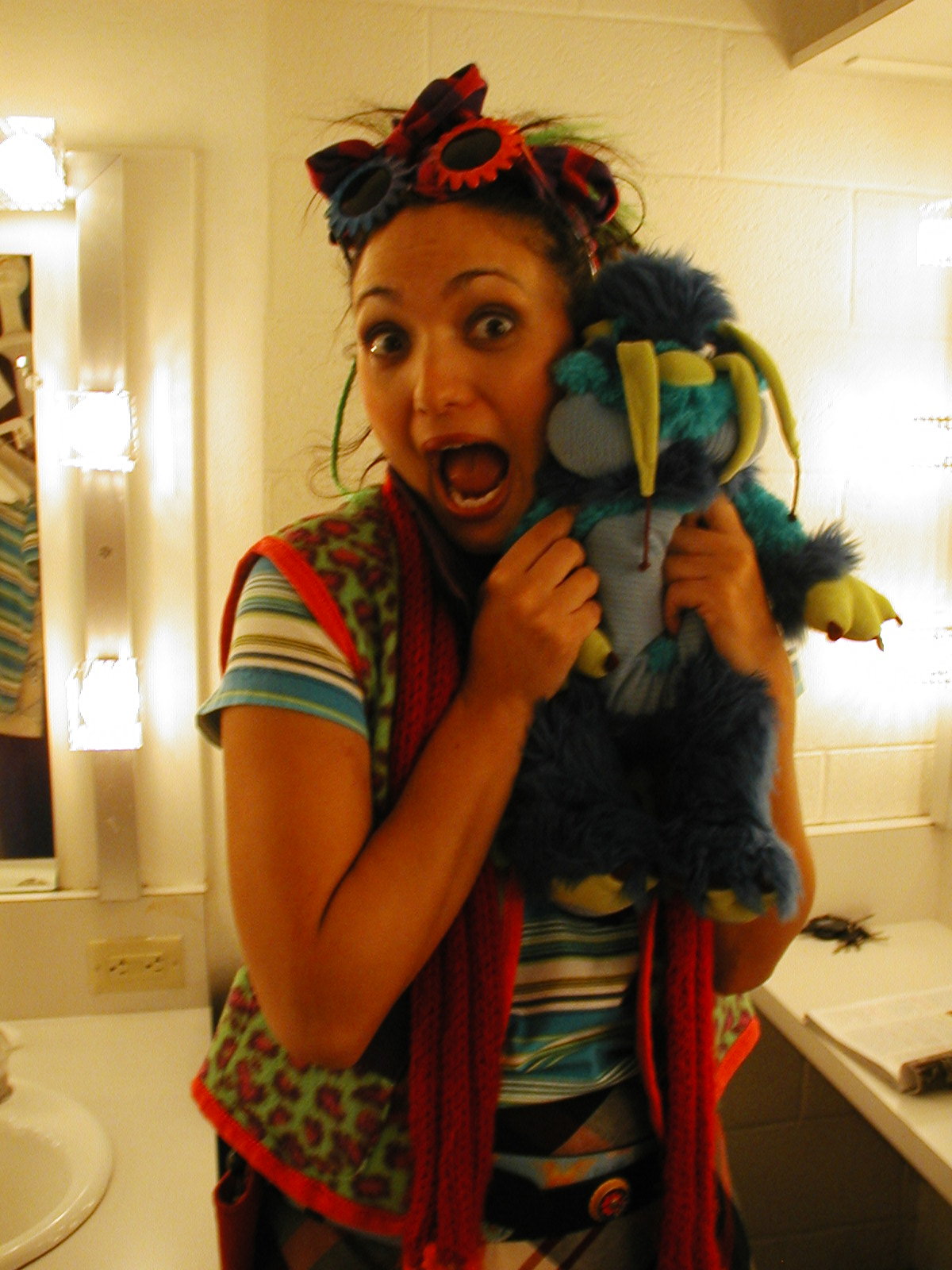
2002-2003, “Lilly’s Purple Plastic Purse.” Cast: Andrea Morales, D. Scott Withers, Jon Gentry, Kyle Sorrell, Kimberly Morgan, Angelica Howland, Creepy Mouse Baby, Dwayne Hartford, Katie McFadzen.
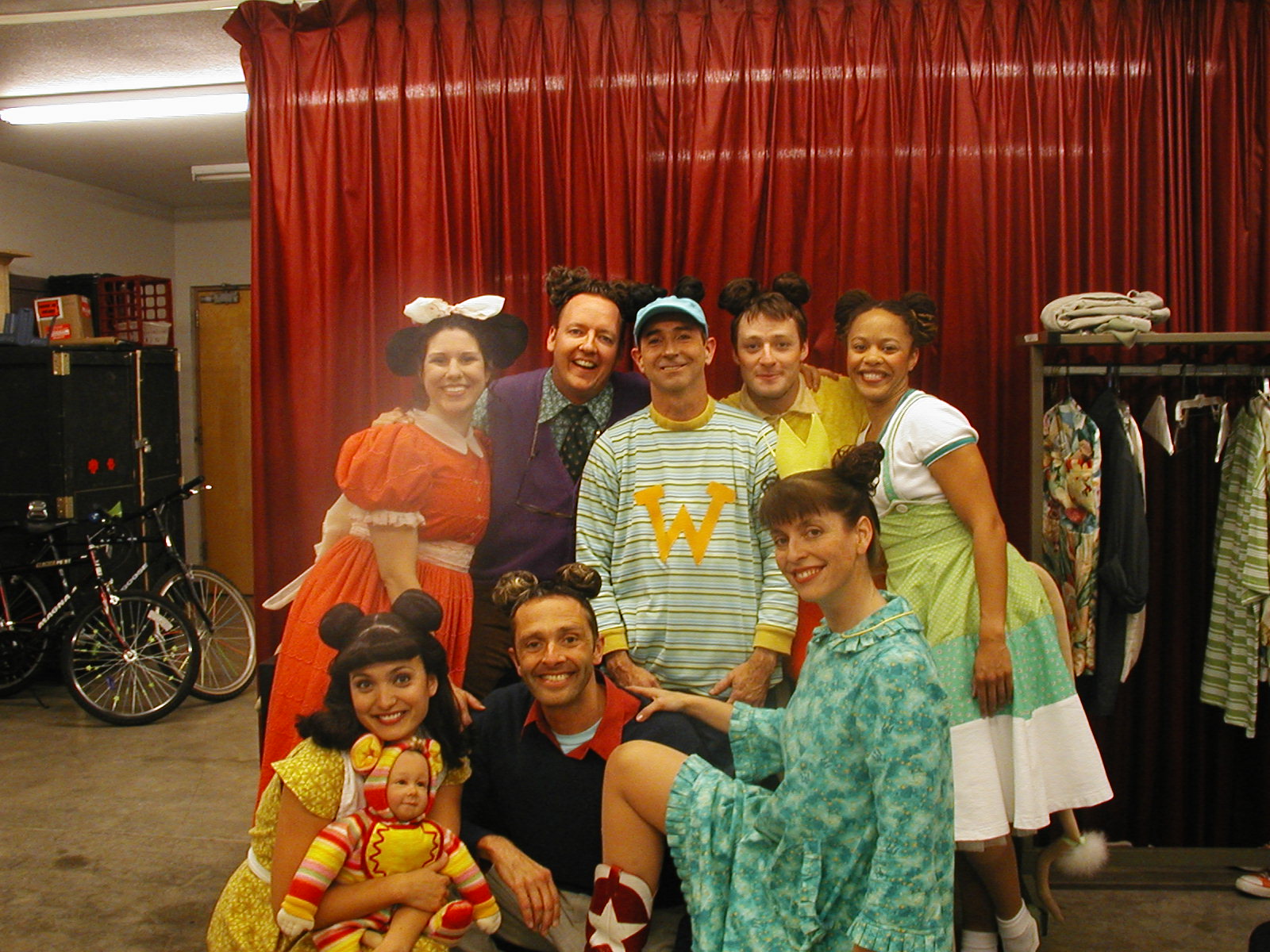
MISSION STATEMENT
Mission: “To create theatre so strikingly original in form, content or both that it instills in young people an enduring awe, love and respect for the medium, thus preserving imagination and wonder, those hallmarks of childhood that are the keys to the future.”
Founded in 1977, Childsplay is a nationally and internationally respected professional theatre company whose chosen audience is children. At Childsplay we believe that young people deserve to experience challenging, thought-provoking theatre of the highest artistic quality. Our respect for children’s intelligence and creativity drives us to produce new and innovative works by theatre’s finest artists. Equally, our understanding of the challenges facing Arizona’s classroom teachers leads us to offer arts education resources in 40 communities annually. In the past 36 years, we have educated and inspired more than four million young people and families. We have grown to serve an average annual audience of 200,000 students, teachers, and families.
Founder David Saar recognized during his MFA studies that children could reap great benefits from experiences with professional theatre. After graduating, Saar gathered classmates in a 1964 Chevy Impala, and equipped with basic sets and costumes, began performing in local classrooms. Today, performing in schools remains a core Childsplay activity with three annual touring productions that visit hundreds of schools throughout Arizona. It is estimated that one in five Arizona K-6 students will see a Childsplay production at their school. More than half of this audience lives at or below the poverty level. Alongside the tour season, Childsplay’s annual programming includes: nine months of in-house productions for school and family audiences at the Tempe Center for the Arts; an on-site academy of theatre classes throughout the year; and a variety of education outreach programs embedded throughout the greater Phoenix community.
PAST SEASONS
1977-78
Will Today Be Yesterday Tomorrow? A Childsplay Christmas
1978-79
Sense and Nonsense, A Childsplay Christmas
1979-80
Wiley & the Hairy Man, Hit and Myth
1980-81
Hit and Myth, Tale of Two Sisters, Montana Molly & the Peppermint Kid
1981-82
The Pied Piper, The Overcoat, Wiley & the Hairy Man
1982-83
Fool of the World, The Bat Poet
1983-84
Aladdin, Not Exactly Cinderella, The Odyssey, Montana Molly & the Peppermint Kid
1984-85
Jack and the Beanstalk, Not Exactly Cinderella, Clarissa’s Closet, The Endless Pavement, Mother Hicks, The Red Shoes
1985-86
Wilde Tales, The Red Shoes, Mythic Proportions, The Belle of Amherst, Ozma of Oz
1986-87
The Emperor’s New Clothes, The Little Prince, Square Pegs, Round Holes, The Masque of Beauty & the Beast, The Pushcart War
1987-88
Clarissa’s Closet, The Legend of the Christmas Rose, The Masque of Beauty & the Beast, Prodigy, The Owl and the Pussycat, Once Upon A Mattress
1988-89
The Owl and the Pussycat, This Is Not A Pipedream, The Velveteen Rabbit, Embroidered Yarns, The Miracle Worker
1989-90
Embroidered Yarns, The Bear That Wasn’t, The Velveteen Rabbit, Just So Stories, The Masquerade of Life/La Mascarada de la Vida
1990-91
Just So Stories, Ama and the White Crane, The Masquerade of Life/La Mascarada de la Vida, The Velveteen Rabbit, Mr. Jones Lives Alone, Through the Looking Glass
1991-92
The Reluctant Dragon, Through the Looking Glass, The Velveteen Rabbit, Noodle Doodle Box, Montana Molly & the Peppermint Kid, Most Valuable Player, The Cherry Orchard
1992-93
The Nightingale, Noodle Doodle Box, Montana Molly & the Peppermint Kid, The Yellow Boat, The Velveteen Rabbit, Tales of the Grotesque, Phoebe Joins the Circus, Bocón!
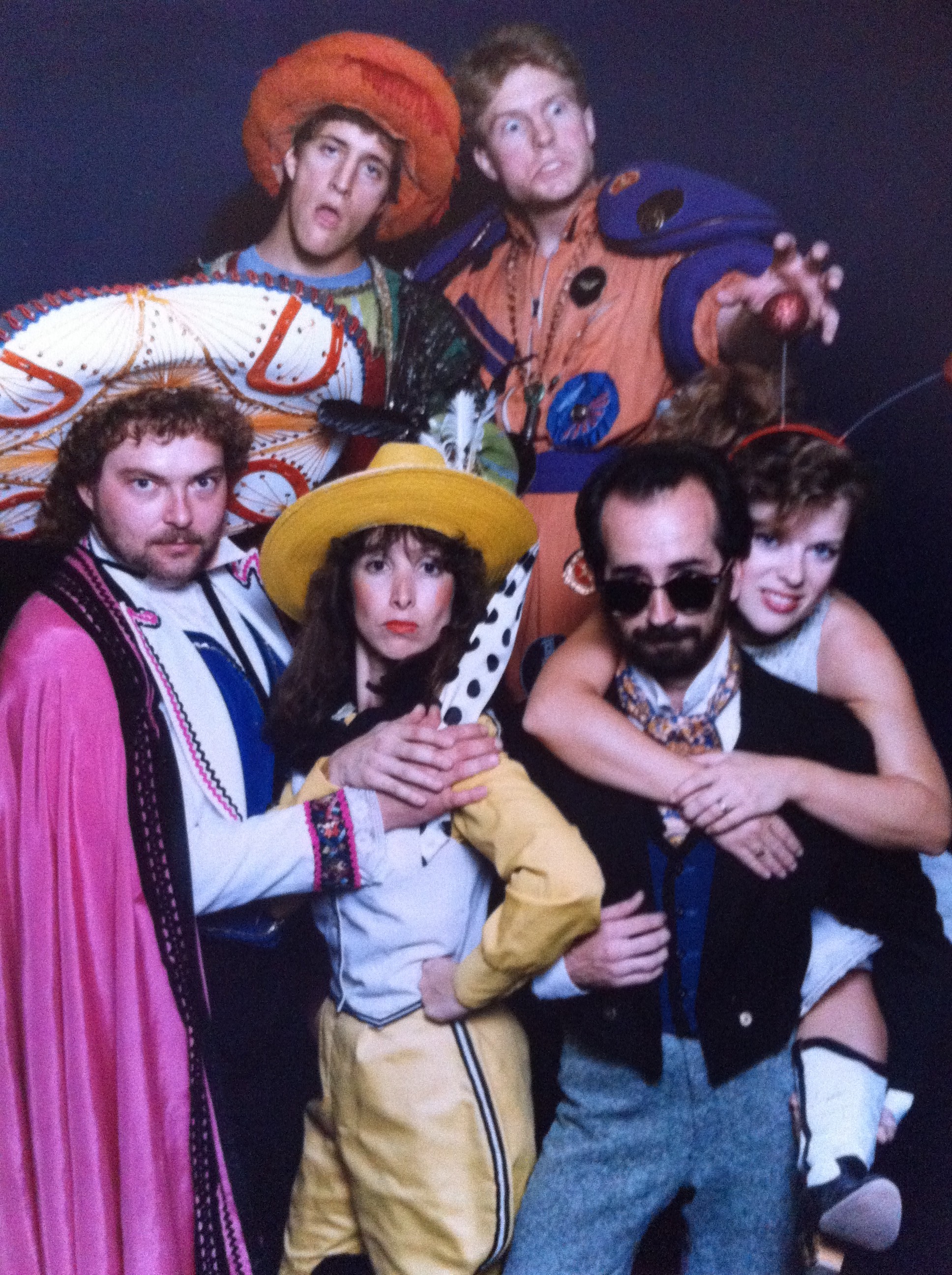
1993-94
The Yellow Boat, Phoebe Joins the Circus, Bocón!, The Velveteen Rabbit, A Perfect Balance, Wiley and the Hairy Man, Hush: An Interview with America
1993. The Yellow Boat. World Premiere. Playwright: David Saar. Director: Carol North Evans. Music. Alan Ruch. Cast: Jon Gentry, Debra K. Stevens, Ellen Benton, Dwayne Hartford, D. Scott Withers, Alex Call, Alejandra Garcia, Helen Hayes. Dramaturg: Susan Zeder. Assistant Dramaturg: Judy Matezscher. Lighting: Amarante Lucero. Scenic Design: Greg Lucas. Musical Director: Alan Ruch. Costumes: Susan Johnson-Hood. Stage Manager. Sylvia Vizcaya.
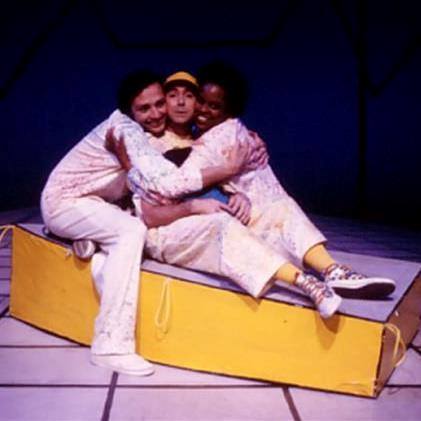
In 1993, I saw the most incredible play, “The Yellow Boat,” that starred my friend, Jon Gentry. I remember sobbing through the majority of it. I only realized today that Ellen Benton, who I later worked with in ”Into the Woods,” was in it too. As was Debra K. Stevens. Jon and Debra were the coaches in my first summer theatre class in…1984? — Shawnna Pomery.
1994-95
Mr. A’s Amazing Maze Plays, A Perfect Balance, Wiley and the Hairy Man, Hush: An Interview with America, The Velveteen Rabbit, In My Grandmother’s Purse, Afternoon of the Elves, Androcles and the Lion
1995-96
The Secret Garden, In My Grandmother’s Purse, Androcles and the Lion, The Portrait the Wind the Chair, The Velveteen Rabbit, The Falcon, Wolf Child: The Correction of Joseph, Phenomenal Smith
1996-97
Charlotte’s Web, The Falcon, The Short Tree & the Bird That Could Not Sing, The Velveteen Rabbit, This Is Not A Pipe Dream, Schoolhouse Rock Live!, Phenomenal Smith
1997-98
Anne of Green Gables, This Is Not A Pipe Dream, Just So Stories, The Velveteen Rabbit, Lincoln’s Log, Still Life With Iris, Schoolhouse Rock Live!, New Plays Festival
1998-99
Still Life With Iris, Lincoln’s Log, Embroidered Yarns, The Velveteen Rabbit, A Perfect Balance, The Highest Heaven, Island of the Blue Dolphins, And Then They Came For Me
APRIL/MAY, 1999. AND THEN THEY CAME FOR ME
Kyle Lawson’s interview in the Arizona Republic, April 30, 1999
The Holocaust.
It’s just a word to some children, but not to those who have seen And Then They Came for Me, the latest entry in Childsplay’s revolutionary campaign to drag youth theater out of its mire of gratuitous fairy tales and aimless musicals.
For the Tempe company’s audiences, the Holocaust wears a face. No, three faces. Two of them belong to Ed Silverberg and Eva Geiringer Schloss, Jewish teenagers who lived in Nazi-occupied Holland during World War II. The third belongs to their friend, Anne Frank, a girl who became one of the most famous victims of the German death squads.
James Still’s drama tells the familiar story from a different perspective. Ed and Eva, who follow Anne into the concentration camps, survive. Anne does not. That her friends live may seem small recompense, but director Graham Whitehead believes Anne would have embraced their survival, not only out of love for them but because it sends a message of hope.
Today’s young people are surrounded by horror, he says. It’s as close as the family television set. Every night, children see frightening things happening to their peers in Kosovo and elsewhere. That these places are far away is small comfort. They know that their own world can turn on them, savagely, and without warning. Most kids watching the events at Columbine High School couldn’t escape the thought, “This could be me.”
“If only subliminally, this play allows children to see people going through the most appalling things and refusing to be destroyed by them,” Whitehead says.
“It says the bad guys don’t have to win.”
As the play’s action unfolds, it is counterpointed by video appearances from the real Ed and Eva.
“By showing that they lived, that they had families, that they accomplished things, we are showing young audiences that, in spite of everything, the human spirit can survive and flourish and triumph,” Whitehead says.
“I think that’s an important message to send right now.”
Relevance is not the only value of And Then They Came for Me. There is a historical lesson to be learned, the director says. “The Jews say never again. We should all say never again. Every generation, every race, every color and every creed should say never again. We cannot turn our back on history. Look at what is happening in Kosovo. We are witnessing it all over.”
There always is the possibility that a play such as this will have the opposite of the intended effect, Whitehead admits. So far, that hasn’t happened.
“The company has been very careful in its preparation, both in working directly with parents and teachers, and by putting information into the hands of future audiences,” he says. (For a study guide, call Childsplay at 480-350-8101.)
“We strongly recommend that children under 9 not see the show, and . . . that parents and grandparents accompany their family members and, afterward, discuss the play together.”
After the show, the cast conducts a question-and-answer session.
“The children seem focused on the play’s issues,” Whitehead says. “They ask (actor Dwayne Hartford) how he feels about playing a Nazi. They want to know if any Jews resisted and what happened to the Germans who disobeyed the Nazis’ orders. You get the feeling that they understand that the only way they can keep the Holocaust from repeating itself is to figure out what made it possible for Hitler to do the things he did.”
JANUARY/FEBRUARY, 1999. CHILDSPLAY. THE HIGHEST HEAVEN. A World Premiere
Playwright: Jose Cruz Gonzalez. Director: David Saar. Cast: Steven Pena, Debra K. Stevens, Jon Gentry, Ellen Benton, Alejandra Garcia. Scenic Design: Gro Johre. Costumes: Connie Furr-Soloman. Lighting Design. Amarante Lucero. Music/Sound Design: Rick Arecco, Allan Lea. Dramaturg: Graham Whitehead. Properties: Darren Goad. Technical Director: Kenneth P. Lager Jr. Stage Manager: Marie Krueger-Jones.
Note: Originally developed at Childsplay with support from the NEA/TCG Theatre Residency for Playwrights Program. Workshopped in 1966 at the New Visions/New Voices program at the Kennedy Center for the Performing Arts, Washington, D.C. Later produced at the Mark Taper Forum, Los Angeles, under the direction of Diane Rodriguez.
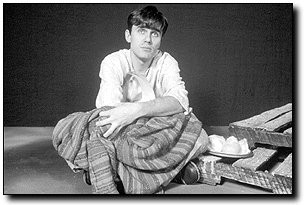
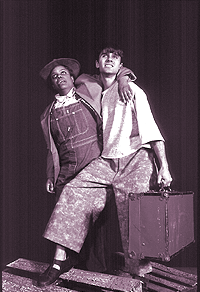
Arizona Republic Review by Kyle Lawson
Too often, children’s theater is pablum: nutritious after a fashion but impossibly bland. Or worse, it’s junk food: the recycling of the same imagination-starved fairy tale.
Never at Childsplay. The company would rather stuff its young audiences with fare too sophisticated for its palate than blunt developing taste buds with cloying sweetness.
In The Highest Heaven, a world premiere at the Tempe Performing Arts Center, Jose Cruz Gonzalez, the troupe’s playwright in residence, has created a fable that is as appetizing for adults as it is for young people.
It is a cautionary tale of greed, passion and cruelty, and, at the same time, a magical enchantment that sends the senses soaring along with the monarch butterflies that are the focus of the story.
The settings are abstract, the plot revealed in shifting flashbacks. Director David Saar paces events quickly. The audience must pay attention to keep up, and to the credit of Gonzalez and the Childsplay artists, 2- and 3-year-olds were as raptly attentive at Saturday’s matinee as their older brothers and sisters.
Eavesdropping on the way to the parking lot, it was clear to this critic that everyone “got it.” Saar and his company risk going over the heads of their young audiences, but The Highest Heaven is proof that it is better to fail children at that level than to succeed by condescending to them.
Gonzalez’s play is the story of Huracan, a 12-year-old (Steven Pena) who is separated from his mother (Alejandra Garcia) in one of those forced deportations of aliens that blighted the government’s reaction to the Depression. He finds himself in a Mexican village, where he comes into conflict with the rapacious Dona Elena (Debra K. Stevens) and her toadying sons and nephews (all played by Jon Gentry).
Huracan finds shelter with El Negro (Ellen Benton), who, as it turns out, also has been evicted from America for reasons that the elderly Black hobo refuses to discuss. El Negro has become the protector of a forest reserve where monarch butterflies go every year to mate amid the lush vegetation – a verdant wonderland that Dona Elena wants to clear-cut to increase her already overflowing coffers.
Huracan is like one of the butterflies’ get, trapped in a chrysalis of naivete. With El Negro’s help, he breaks the bonds of childhood but discovers that freedom bears a draconian price tag. There are hard truths to be learned about ecology and economics, decency and friendship. The most painful lesson, and the most liberating, comes in realizing that life’s journey inevitably ends in death.
Gonzalez never belabors the moralizing or the butterfly metaphor, yet, when the monarchs spiral heavenward at the close (an exhilarating bit of stage magic), there are cheers from the audience and an understanding that Huracan has begun the perilous but life-affirming migration to adulthood.
Childsplay audiences have come to take excellent performances for granted, and the quintet of actors in The Highest Heaven does not disappoint. But Stevens’ versatility is exceptional even for this troupe. When last seen, she was the plucky young hero of The Velveteen Rabbit. Here she is a harpy from a child’s darkest nightmare, a chilling, malevolent presence that dominates the play even when off stage.
After more than a decade of dealing with Childsplay audiences, Stevens knows how far to take this. Just when Dona Elena is in danger of seriously frightening young playgoers, the actress does something so foolishly comic that they are startled into laughter. This is children’s theater, and she never forgets it – but at the same time, she never plays her audience for fools.
The same can be said of the company’s designers. The physical production represents state-of-the-art technology, but the effects are never used for cheap effect. Even at its most dazzling, the magic in The Highest Heaven has meaning. Sometimes, that meaning is subtle, but the assumption is: If the younger members of the audience don’t get it, the older ones will explain it.
It is a testimony to Childsplay’s skill at making theater that very little explanation is required.
MARCH 1999. “Island of the Blue Dolphins“
Article by Kyle Lawson, Arizona Republic.
Childsplay continues to engage the imagination of its young audiences.
Island of the Blue Dolphins, which opens this weekend, is the magical stage translation (by Brian Burgess Clark) of Scott O’Dell’s bestselling book that received the Newbery Medal and was named one of the 10 best children’s stories of the past 200 years.
The play focuses on a 12-year-old girl who must learn how to survive on her own after she is left behind when her people abandon their native island.
Dolphins features state-of-the-art technical effects and one of the year’s must-see performances by Alejandra Garcia, a Childsplay veteran who most recently appeared in the company’s The Highest Heaven, The Yellow Boat, This Is Not a Pipe Dream and Hush: An Interview With America.
Others in the cast are Debra K. Stevens, Jon Gentry, Jere Luisi, D. Scott Withers, Gordon Waggoner, Steven Pena and David Starry. Direction is by company founder David Saar, and choreography is by Frances Cohen, artistic director of the Center Dance Ensemble. The designers are among the best the Valley has to offer: Gro Johre, scenery; Rebecca Akins, costumes; Paul Black, lighting; David Maddox, sound; and Cat Dragon, props.
Review by Kyle Lawson, Arizona Republic
Island of the Blue Dolphins is crammed with the sort of derring-do that moves boys to the edge of their seats. Girls, too, since the Childsplay production at the Herberger Theater Center features a plucky heroine in place of the usual hero.
The swashbuckling action and rustic humor are complemented by moments of great visual beauty. Waves crash against the shores of a remote northern island. A sailing ship plunges into a storm. Panoramic sunsets transform themselves into basins of stars.
All this pales beside the play’s scenes of violence. Marauding otter hunters massacre the inhabitants of a native village in a stylized, strobe-lighted ballet. Later, a pack of wild dogs surrounds a boy who has no place to run. As the dogs lunge, the lights dim. When they come up, the youth’s body lies crumpled against the rocks.
It is a cruel message. The world is a wondrous, savage place, and children are at its mercy. To some adults in the audience, it seems shockingly grim.
This is where Childsplay separates itself from other children’s troupes. Director David Saar and his ensemble of actors refuse to take the easy route. They challenge their viewers to confront the demons of childhood, in this case, death, feelings of loss and the terror of being alone, and perhaps to learn a lesson or two about dealing with them.
Take the killing of the boy. Playwright Brian Burgess Clark, working from the Newbery Medal-winning book by Scott O’Dell, asks his audiences to look beyond the horror to contrast the boy’s death with the slaughter of his family at the hands of the hunters. The hunters murdered the natives out of greed and hatred. The dogs killed because their pups were hungry. Is the dogs’ behavior different from that of the tribe, which kills birds and sea creatures to feed and clothe itself?
There is a natural order to things, Clark seems to suggest, even if it is harsh. To survive, children must learn to live in harmony with it. Sophisticated reasoning is required here, but the beauty of it is that the youngsters in Childsplay’s audiences get it. Sometimes, their parents have to help, but that’s the point. Theater, the best theater, starts conversations.
After the massacre, the survivors abandon the island. Eleven-year-old Karana and her young brother are left behind. After the boy’s death, Karana grows to womanhood, with only the ghosts of her ancestors and the island’s animals as companions.
She survives, learning by instinct and trial and error how to bend the elements and the wildlife to her will. She befriends a wild dog and, later, a Russian girl who comes to the island with other hunters. Slowly, she purges herself of her fears and bitterness, and comes to accept the world that God has given her. When she is rescued and taken to a distant mission station, she realizes that her experiences have made her strong. She has taken responsibility for her life.
Alejandra Garcia, an actress of Mexican descent, navigates this journey with charm and considerable skill. Smart, feisty, yet fearful and vulnerable, her final triumph is sweet, especially for the girls in the audience who rarely see this kind of role model on stage.
The remainder of the Childsplay ensemble play numerous roles. All are good, but Debra K. Stevens’ Russian girl is a standout, along with Jon Gentry’s and D. Scott Withers’ comic sailors.
The real stars here are the production’s designers. Rebecca Akins’ costumes, made entirely from feathers and natural fibers, are stunning, as is Paul Black’s atmospheric lighting, with its swirling patterns that help audiences track the passing years. Gro Johre contributes another of her imaginative scenic designs, evoking wave-eroded island ledges, windswept promontories and smoky, incense-filled churches. Frances Cohen, artistic director of Center Dance Ensemble, makes a notable Childsplay debut with several abstract ballets inspired by native dances.
Like all Childsplay productions, Island of the Blue Dolphins improves as children and parents discuss it in the car on the way home and over the breakfast table the next morning. In the theater, it provokes wonder, laughter and – fair warning – moments of genuine fright. It is afterward, with the aid of recollection, that one realizes it also has shed a little light on a dark world.
1999-2000
The Wind in the Willows, Just So Stories, Selkie, A Perfect Balance, The Velveteen Rabbit, The Owl and the Pussycat, Even Steven Goes To War, And Then They Came For Me, The King of Ireland’s Son
2000-01
Time Again in Oz, The Owl and the Pussycat, Salt & Pepper, The Velveteen Rabbit, Perô or The Mystery of the Night, The Boxcar Children, And Then They Came For Me, Rhubarb Jam,
2001-02
Schoolhouse Rock Live!, Rhubarb Jam, New Kid, The Velveteen Rabbit, Cyrano, The Reluctant Dragon, Apollo: to the Moon, Eric & Elliot
JANUARY 2002 “CYRANO” Co-production between Childsplay and ASU’s Herberger College of Theatre.
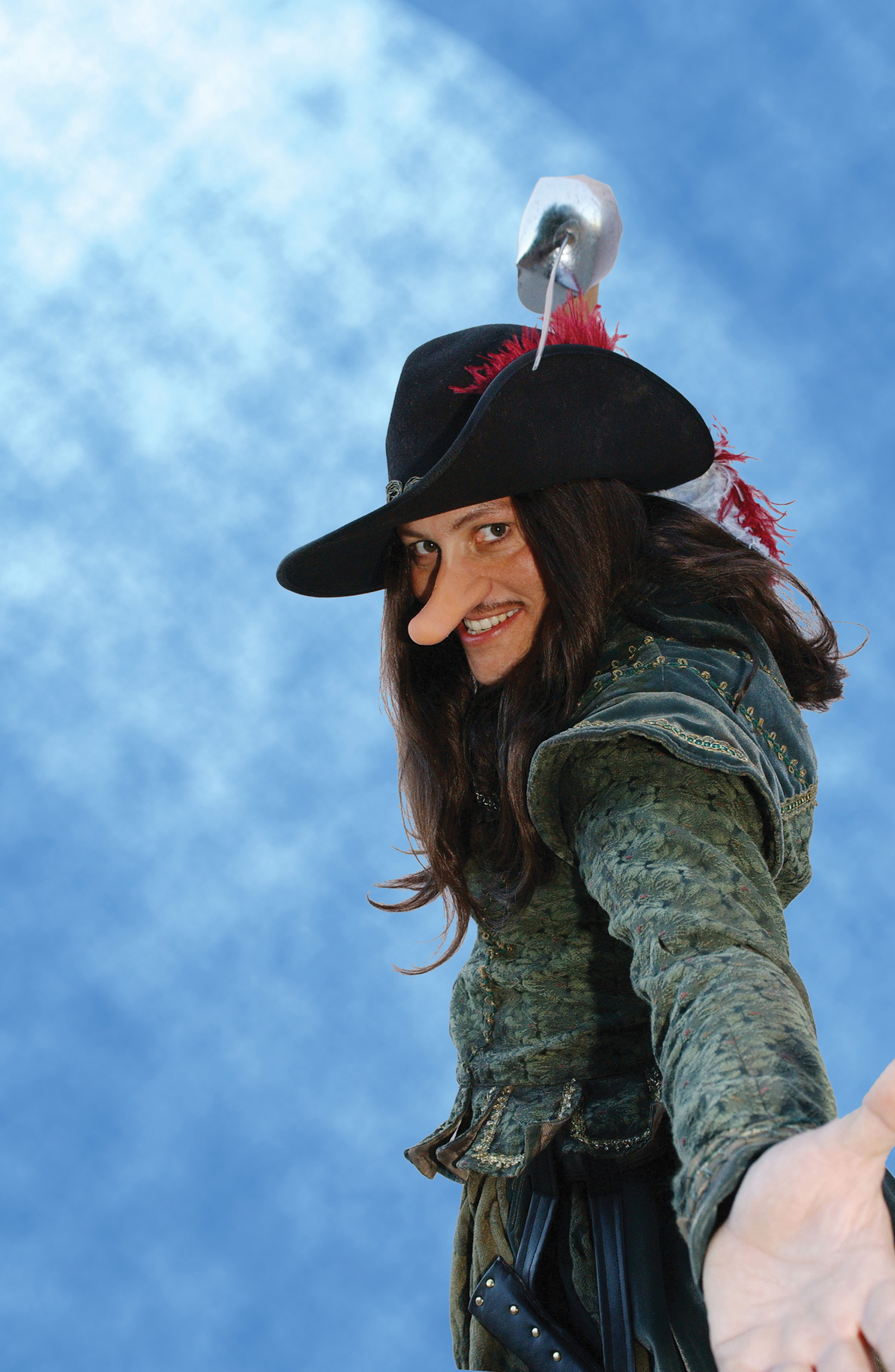
Jere Luisi as Cyrano in 2002 production by Childsplay at ASU’s Herberger College of Theatre. (Photo credit unknown)
Excerpt from article by Kyle Lawson, Arizona Republic
Swordfighter extraordinaire, poet and philosopher known throughout Paris as a one-man crusade for truth and beauty—that’s Cyrano de Bergerac. His outrageous courage is surpassed only by his outrageous proboscis—or as some would say his GIGANTIC nose! Cyrano, the classic tale of the ultimate love triangle, will come alive on stage at the Paul V. Galvin Playhouse (ASU Campus) Feb. 15 – March 3, 2002. This is a first-time collaboration between the Herberger College of Fine Arts Department of Theatre and Childsplay.
This new adaptation of Edmond Rostand’s Cyrano is written by Barry Kornhauser and is suited for young audiences (over 11 years of age). Directed by Childsplay’s David Saar, this production features an all-star cast with Jere Luisi as Cyrano; Debra K. Stevens as the object of his desire, Roxanne; and ASU student Kyle Sorrell as the handsome Christian. The play’s cast dons the costume creations of ASU’s Connie Furr-Solomon and performs in the Baroque literary world as designed by Robert Klinglehoefer.
2002-03
Charlotte’s Web, New Kid, Two Donuts, Eric & Elliot, The Velveteen Rabbit, The Yellow Boat, Lilly’s Purple Plastic Purse, The Beauty Machine, Stage Reading/Workshop
2003-04
Sideways Stories from Wayside, School, The Velveteen Rabbit, The Big Friendly Giant, Power Play, The Imaginators, The Beauty Machine, Eric & Elliot
2004-05
A Year with Frog & Toad, New Kid (tour only), Eric & Elliot (tour only), The Velveteen Rabbit, Go, Dog. Go!, Shakespeare’s Romeo & Juliet, Interrupting Vanessa, Old Jake’s Skirts
2005-06
Junie B. Jones & A Little Monkey Business, Eric & Elliot (tour only), Old Jakes Skirts (tour only), Seussical, Bunnicula, Danny, King of the Basement, The Secret Garden, Tomás and the Library Lady, This Is Not A Pipe Dream
2006-07
Sleeping Beauty, Tomás and the Library Lady (tour only), Eric & Elliot (tour only), Lost and Foundling, Seussical, Peter and the Wolf, Danny, King of the Basement (tour only), Petite Rouge, River Rat & Cat
2007-08
Charlotte’s Web, A Thousand Cranes, Seussical, Goodnight Moon, A Tale of Two Cities, Alexander and the Terrible, Horrible, No Good, Very Bad Day, In My Grandmother’s Purse, A Little Bit of Water.
MARCH/APRIL 2008. “A Tale of Two Cities” A World Premiere.
Playwright: Dwayne Hartford. Source: Novel by Charles Dickens. Cast: D. Scott Withers, Joseph Kremer.
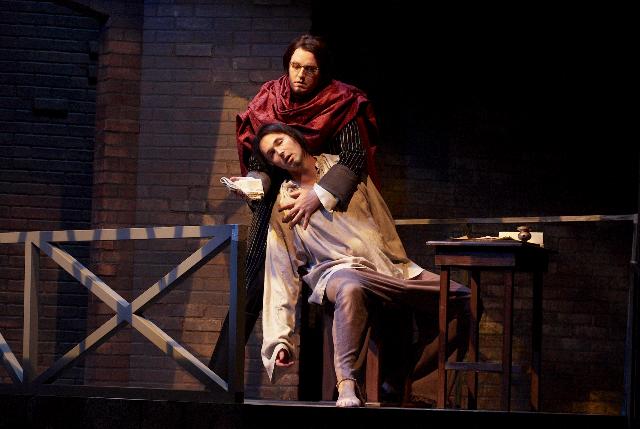
- Sydney Carton (D. Scott Withers) visits prisoner Charles Darnay (Joseph Kremer) in his cell in Childsplay’s A Tale of Two Cities. (Photo by Heather Hill)
2008-2009
A Little Bit of Water (tour), Miss Nelson is Missing, Getting Near to Baby, The Velveteen Rabbit, Busytown, Rock, Paper, Scissors, Ferdinand the Bull, The Never Ending Story
2009-2010
Ferdinand the Bull (tour), Honus and Me, Androcles and the Lion, Junie B. in Jingle Bells, Batman Smells, Peter and the Wolf, Tomato Plant Girl, The Big Friendly Giant
2010-2011
Ferdinand the Bull (National Tour), A Year with Frog and Toad, Junie B. in Jingle Bells, Batman Smells!, Go, Dog. Go!, New Kid (tour only), The Imaginators, The Borrowers
2010. “A Year with Frog and Toad“
Cast: Jon Gentry, D. Scott Withers.
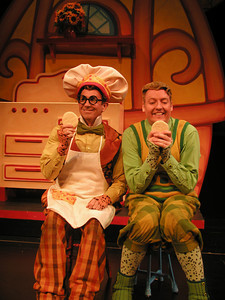
2011-2012
Lilly’s Purple Plastic Purse, The Sun Serpent, Tomás and the Library Lady, Lyle the Crocodile, With Two Wings, Rock the Presidents, The Color of Stars
2011. “Lily’s Purple Plastic Purse“
Playwright: Kevin Kling. Source: Book by Kevin Henkes. Director: David Saar. Choreographer: Molly Lajoie Plutnicki. Cast: Yolanda London, Dwayne Hartford, Debra K. Stevens, D. Scott Withers, John Gentry, Michelle Cunneen, Kate Haas, Nathan Dobson. Assistant Director: Katie McFadzen. Scenic Design: Carey Wong. Costume Design: Connie Furr-Soloman. Lighting Design: Rick Paulsen. Sound and Projection Design: Anthony Runfola. Stage Manager: Samantha Monson.
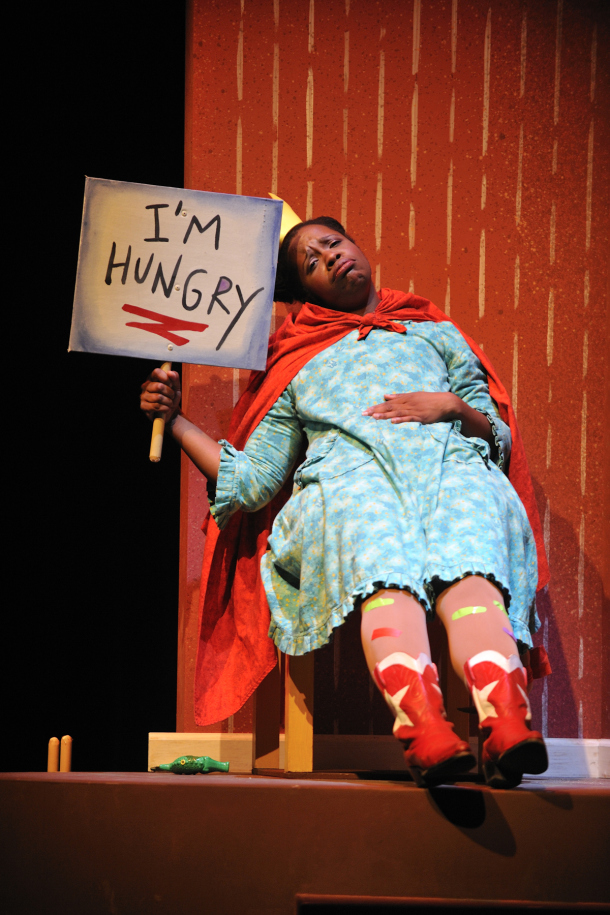
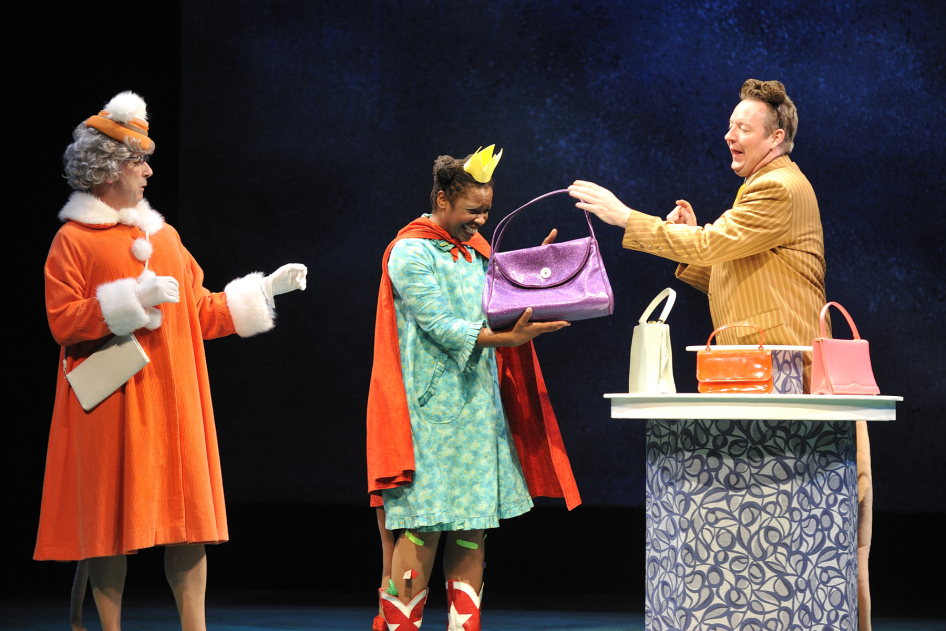
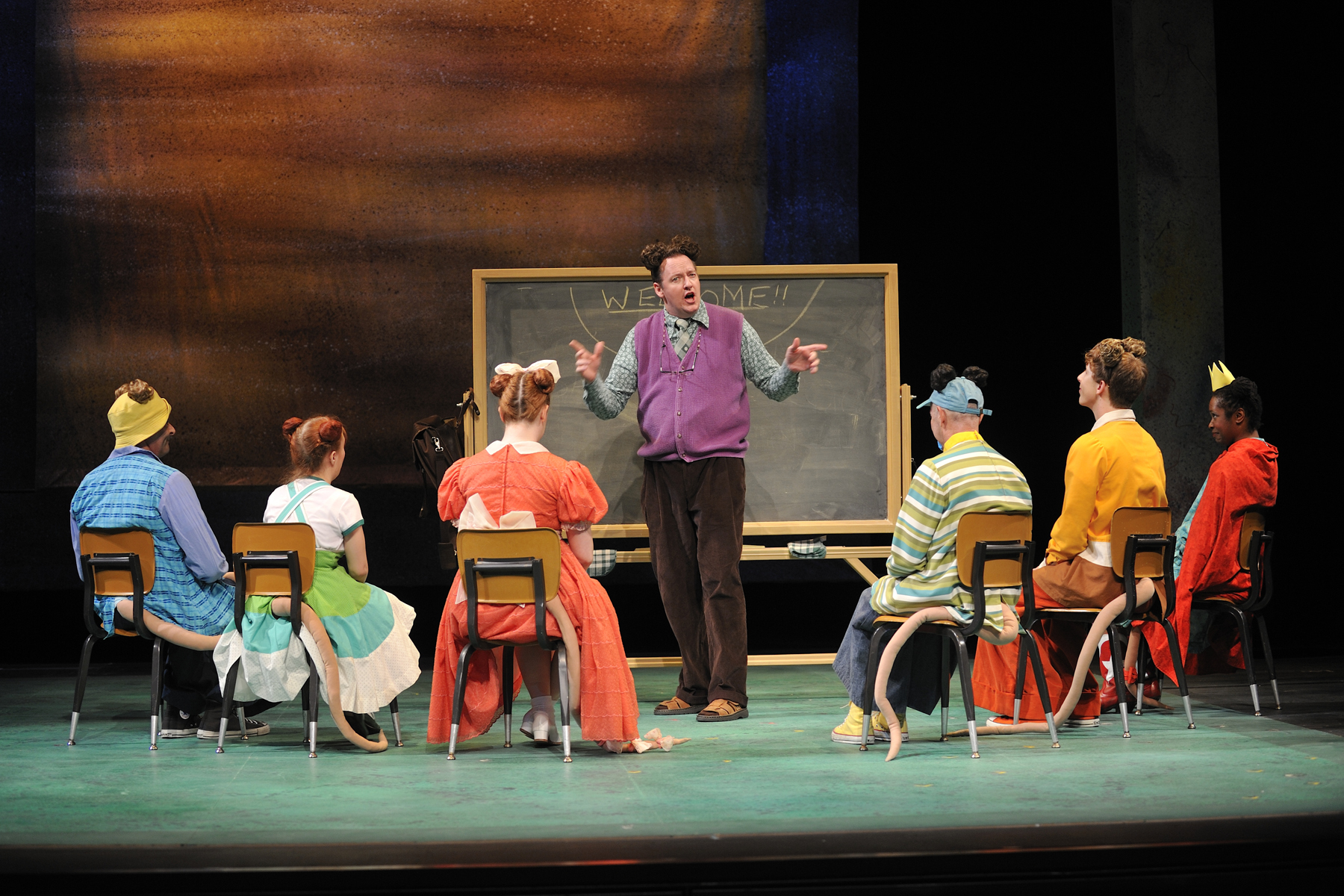
2011. THE COLOR OF STARS. Cast: Dwayne Hartford, Andres Alcala, Jon Gentry, Katie McFadzen, Debra K. Stevens, D. Scott Withers.
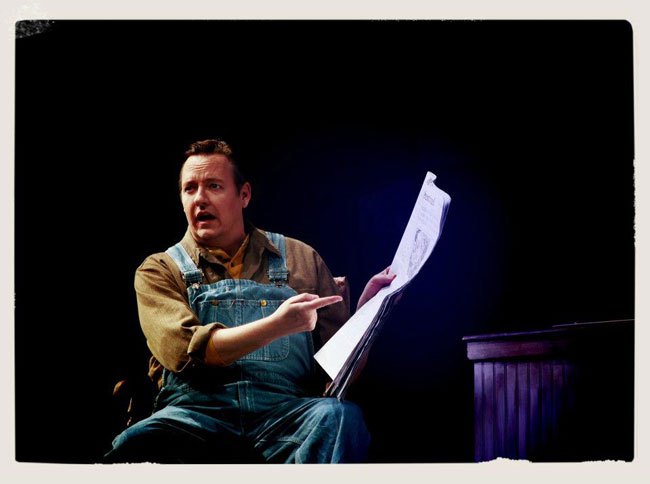
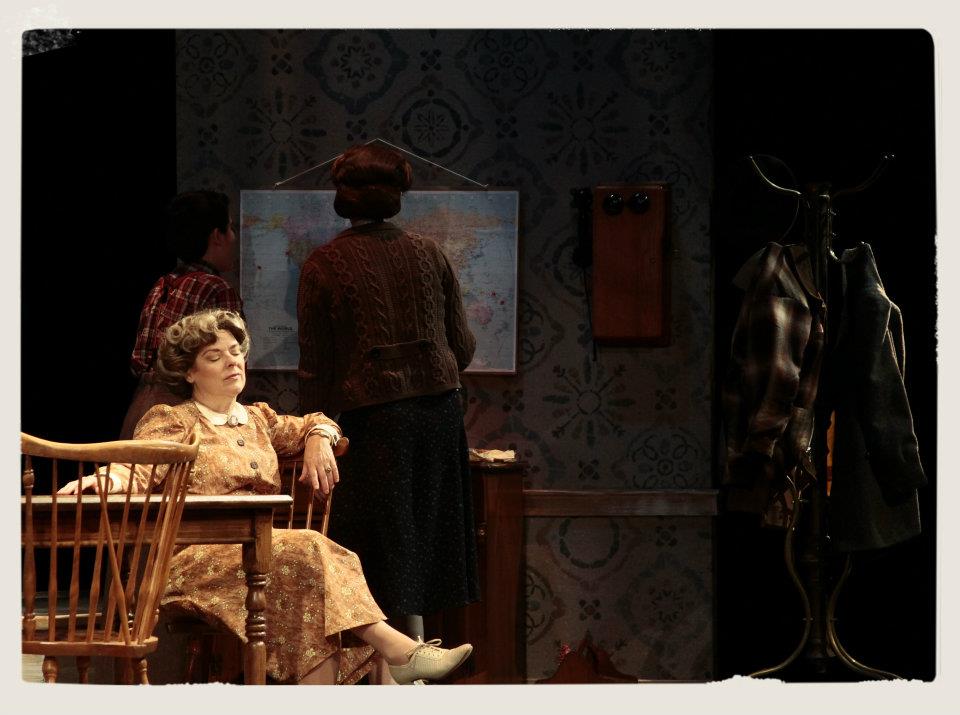
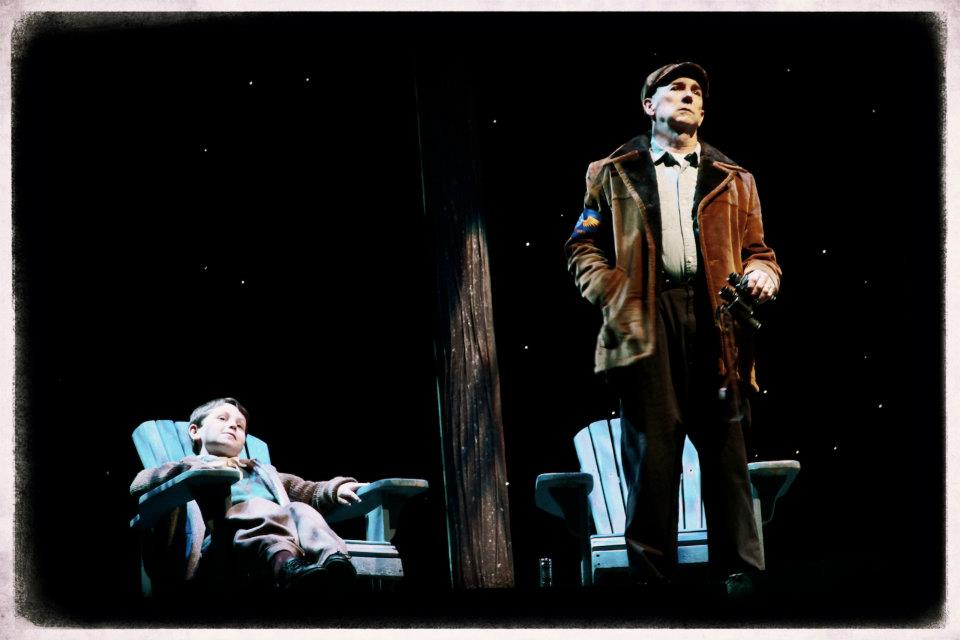
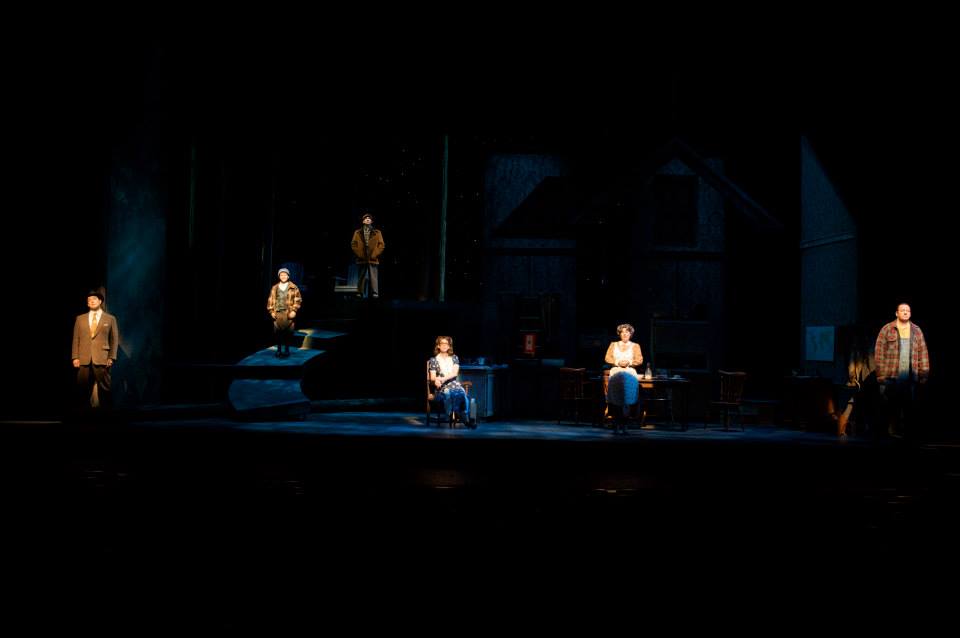
OCTOBER/NOVEMBER, 2011. THE SUN SERPENT.
Playwright: Jose Cruz Gonzalez. Director: Rachel Bowditch. Cast: Andres Alcala, others. Music, Sound: Daniel Valdez. Masks: Zarco Guerrero. Videography: Adam Larsen.
Note: “The Sun Serpent” was Childsplay’s contribution to the CALA Arts Festival, a two-month celebration of Latino culture in the Valley.
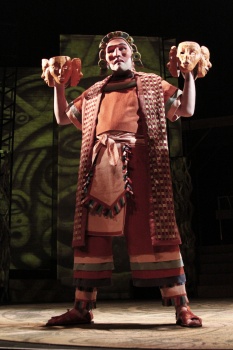
Article by Kerry Lengel, Arizona Republic
Most plays start their journey to the stage with a playwright at a keyboard. But “The Sun Serpent,” Childsplay’s multimedia epic about the Spanish conquest of the Aztecs, began its life with six actors on yoga mats.
On Saturday, nearly two years later, it will debut as an intimate spectacle with shimmering video projections and a musical soundscape composed by Daniel Valdez of “Zoot Suit” fame. Dozens of characters will be portrayed by a trio of performers using masks created by Valley artist Zarco Guerrero.
“When I went to Veracruz and followed the path of Cortés’ army through the jungle to Mexico City, I felt like I was stepping into a whole different world,” says playwright José Cruz González. “I want the audience to experience the same thing I did. …
“This to me is like the ‘Iliad’ or the ‘Odyssey.’ It’s that huge in scale and scope, but we’re doing it with only three actors.”
González, who lives in California, has premiered half a dozen plays for young audiences at Tempe’s Childsplay, including “The Highest Heaven” and “Tomás and the Library Lady.” But though he is the writer of “The Sun Serpent,” he shares credit for its creation with many other artists. It is a “devised” work, an example of a growing trend in the theater.
The basic idea of devised theater is to break down the linear, hierarchical model of new-work creation, in which the playwright produces a draft, workshops and revises it, then hands it off to a director who guides the actors and designers. Instead, all of those creative voices come together at the beginning, improvising on themes and ideas to explore possibilities that a single artist could never imagine on his own.
While this is not exactly a new way to work, it is de rigueur. For example, devised work was the focus at the inaugural RADAR L.A. Festival, an international showcase of cutting-edge theater held in Los Angeles in June.
“The thing that distinguishes devising from the regular process is that the physicalization of the actors is just as important as the text,” says ” Serpent” director Rachel Bowditch. “Everyone has more of an equal voice. And that is becoming a trend because it allows people to create theater about things that haven’t been explored before.”
She adds, “Ninety-nine percent of devised theater is really, really bad. But the 1 percent that is good is the best theater that is out there.”
Bowditch, a professor in Arizona State University’s School of Theatre and Film, specializes in visual spectacle and movement-based performance — hence the yoga, among exercises she uses to get actors into a creative mode.
The first time Childsplay’s artists got together to work on “Sun Serpent,” they were prepared with a brief story proposal, about a young boy of the Totonac people who follows Spanish conquistador Hernán Cortés to the Aztec capital, as well as plenty of research about pre-Columbian cultures and the history of the conquest. They selected props out of storage — toy swords, masks, a long sheet of China silk — and, essentially, played.
“It is very challenging,” says cast member Andrés Alcalá. “You’re given an idea, a seedling, and as actors we have to put all of our instincts, all of our training, all of our tools into effect and explore the possibilities.
“So we would come up with different ideas about what the cultural life would be like. We might tell a story with props and puppets in a smaller format, and then we would get it into a bigger scale and use fabric and masks to try to create that world.”
The silk turned out to be especially versatile. They used it to simulate ocean waves and an erupting volcano. At one point, Bowditch said, they considered building the entire show around that one piece of fabric.
After each devising session, González would spend hours writing. Together with the actors, he developed the plot into a conflict between two brothers, one who believes that Cortés is the god Quetzalcoatl, returned to free his people from the oppression of the Aztec emperor Moctezuma, and another who sees himself as part of a very different story.
The production design evolved similarly. The team settled on masks as the best way to create an array of characters with a cast of only three and brought in Chicano artist Zarco Guerrero, who is famed for his masks. He created nearly three dozen, each fitted to an individual actor’s face. There are Aztec faces and Spanish faces, a jaguar and a feathered serpent.
Video artist Adam Larsen, who has designed projections for theater and opera around the country, has created lush, painterly images to help move the story from seaside to jungle to the Aztec capital known as the City of Dreams. Composer Daniel Valdez, who wrote the music for “Zoot Suit,” used Spanish and native instruments to create the soundtrack.
All of these elements are integral to the storytelling.
“We’re actually able to show the codices, the pictorial symbols that tell the story of the conquest,” Alcalá says. “It also allows us to transform the stage into a jungle, to pretend like we’re underwater with moving video on these panels. It really allows the audience to take that leap of faith, that extra step into the magical world that we are creating onstage.”
2012-2013
Rock the Presidents, Rock Paper Scissors (Steen Papier Schaar), The Giver, Junie B. in Jingle Bells, Batman Smells!, Click Clack Moo: Cows That Type, Boats, Recipe for Disaster!, A Wrinkle in Time
2013-2014
Schoolhouse Rock Live! Super Cowgirl & the Mighty Miracle. Robin Hood.
2014. April, May. “Schoolhouse Rock Live!”
Book. Scott Ferguson, George Keating, Kyle Hall. Music and Lyrics: Lynn Ahrens, Bob Dorough, Dave Frishberg, Kathy Mandry, George Newall and Tom Yohe. Director: Anthony Runfola. Musical Director: Alan Ruch. Choreographer: Molly Lajoie Plutnicki. Cast: Eric Boudreau, Keilani Akagi, Mollie Robinson, Rudy Ramirez. Scenic Design: Holly Windingstad. Costume Design: D. Daniel Holingshead. Lighting Design: Tim Monson. Production Design: Limotrophe Films. Sound Design: Christopher Neumeyer. Stage Manager: Sarah Chanis.
Thanks to Matt Hinrichs for providing the cast and crew lists.
Note: A pop culture phenomenon returns to the musical stage! Academic subjects will never seem boring again when presented through megahits like “Conjunction Junction,” “Just a Bill,” “Interplanet Janet” or “Three is a Magic Number.” Schoolhouse Rock explodes onto the Childsplay stage with songs you loved updated for a whole new generation!



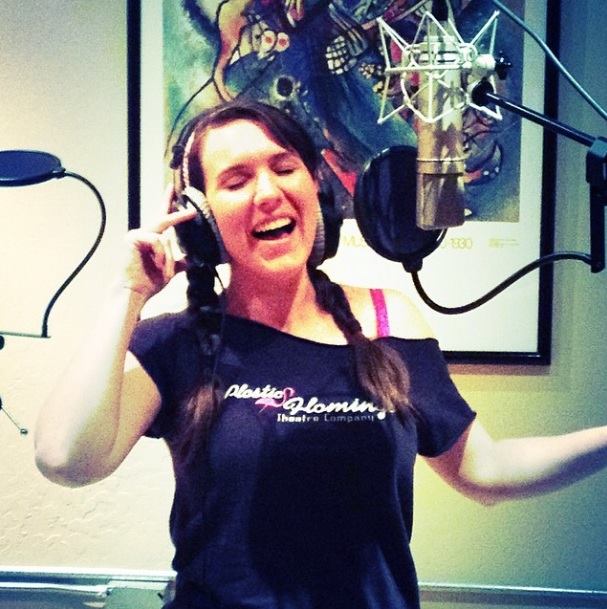

2014. March. “Super Cowgirl and Mighty Miracle.”
Playwright: Jose Cruz Gonzalez.
Note: When a stray dog appears on the doorstop, it’s love at first sight for 6-year-old Cory, and the last straw for Grandma Autumn. Life hasn’t been easy lately for either of these two, facing absent parents and lost homes. But in a delightfully surprising story filled with humor and heart, Super Cowgirl and Mighty Miracle reminds us love makes almost anything possible, even in hard times.
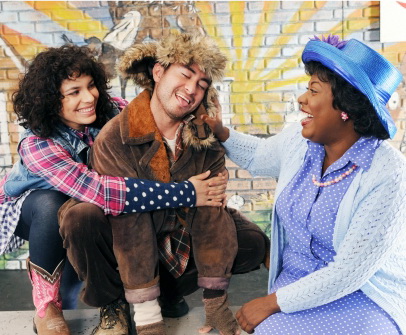
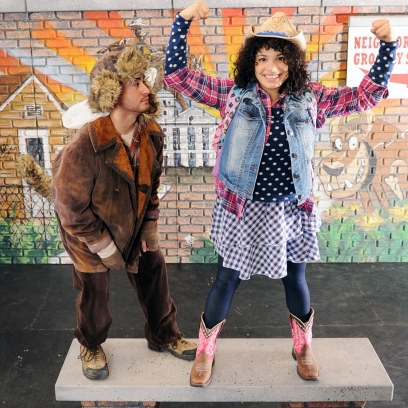
SEPTEMBER 2013 “Robin Hood.” Director: Dwayne Hartford. Cast: Jon Gentry, Kate Haas, Ricky Araiza, Andy Cahoon, Eric P. Boudreaux and Keath Hall. . Set Design: Aaron Jackson. Lighting: Tim Monson. Fight Choreographer: David Barker. Costumes. Connie Furr-Soloman. Sound: Chris Neumeyer. Wigs: Katie Peck. Stage Manager: Samantha Monson.
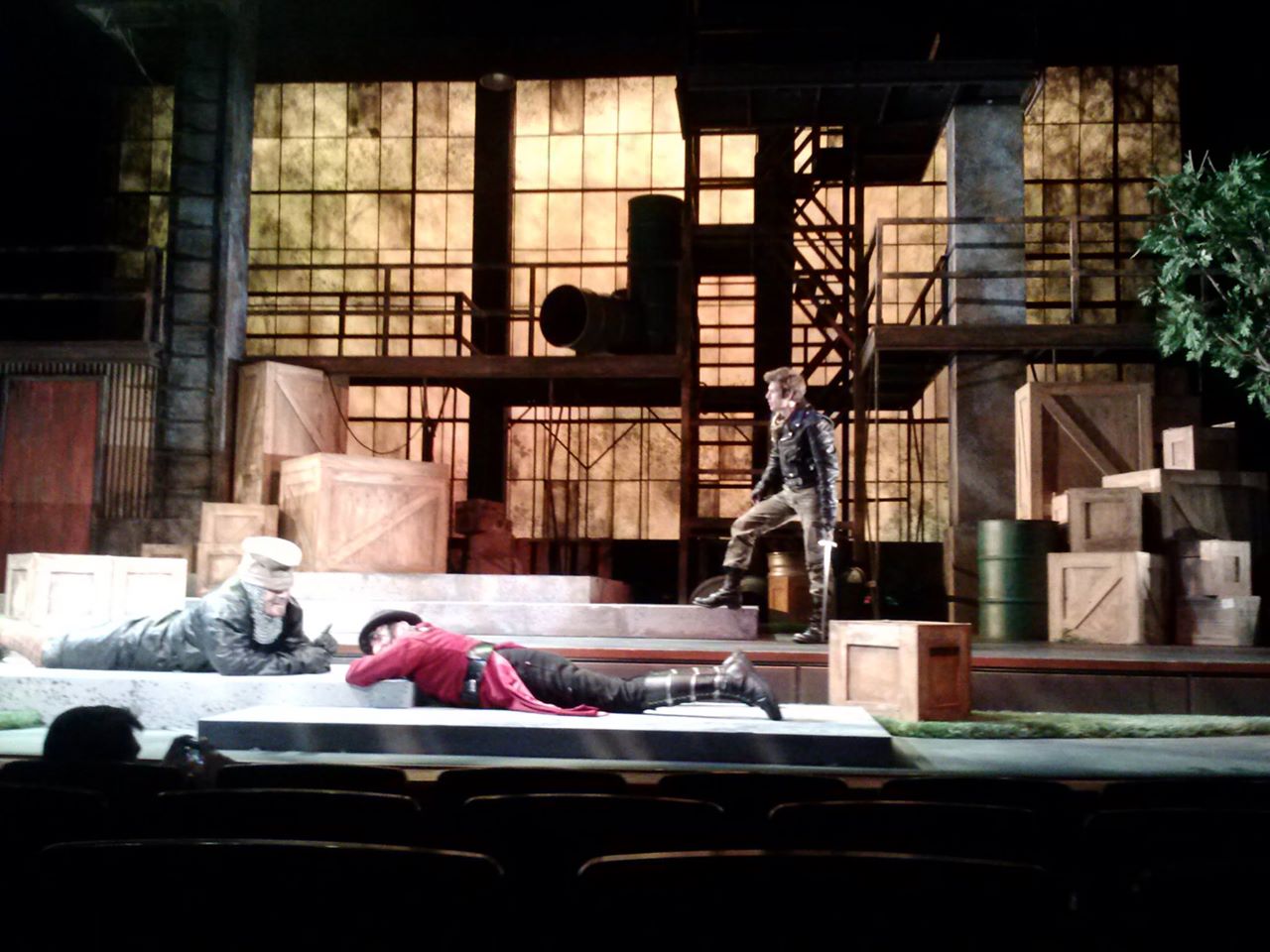
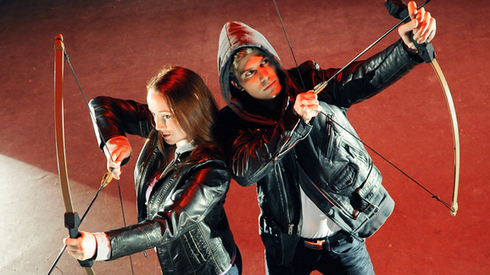
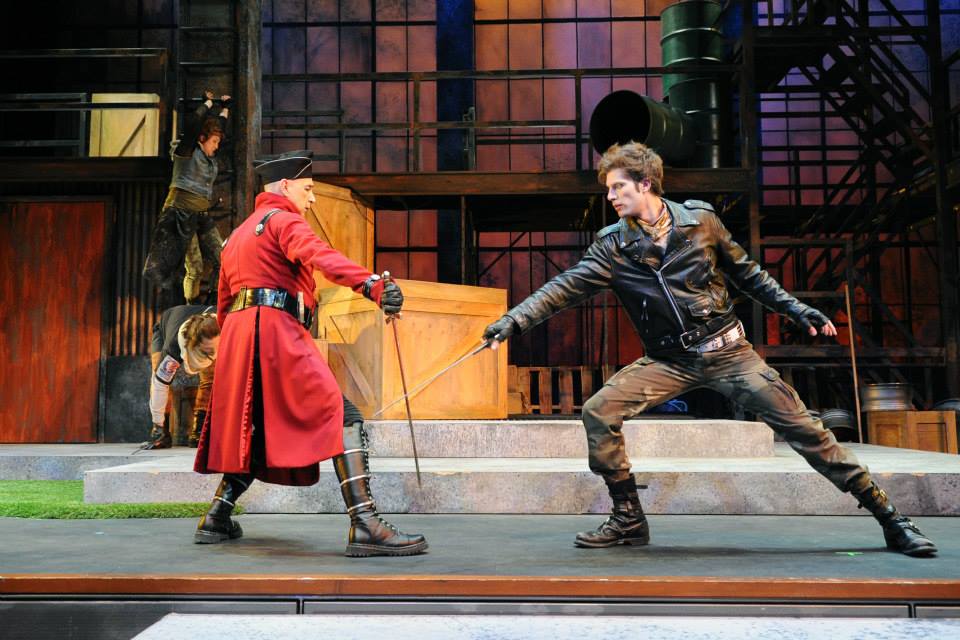
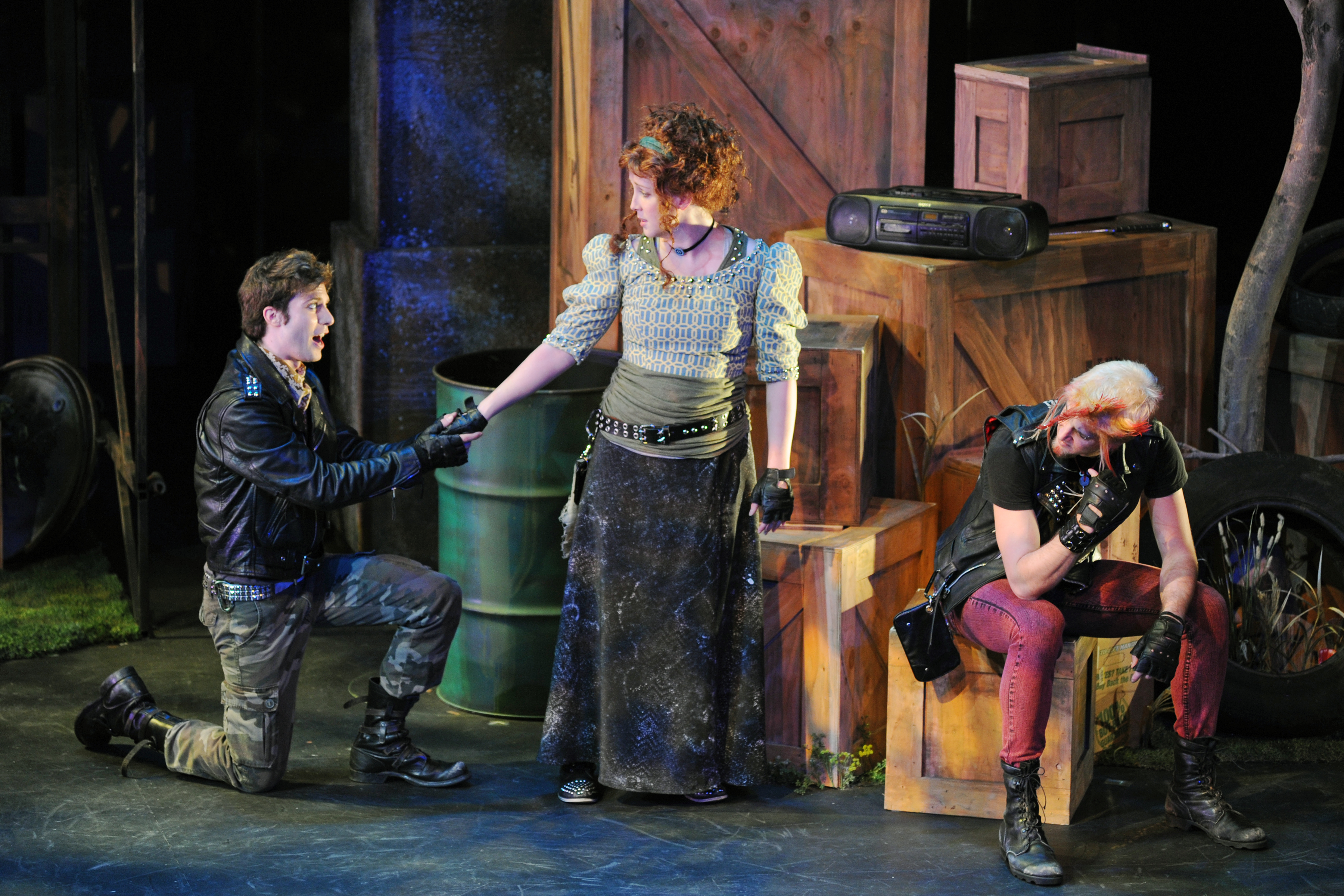
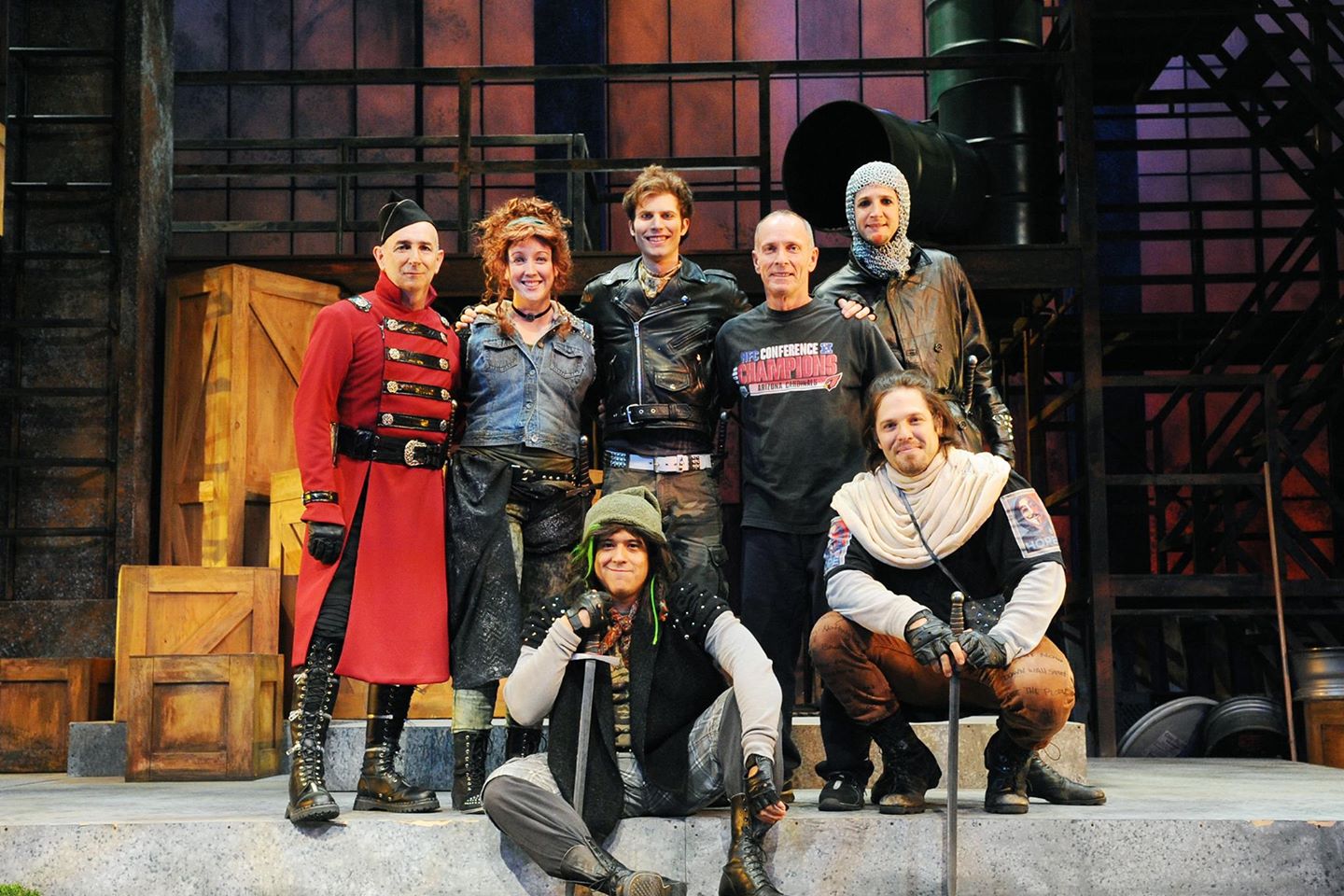
REVIEW By Kerry Lengel, The Arizona Republic/azcentral.com, Sept. 16, 2013
Urban blight comes to Sherwood Forest in Childsplay’s season-opening production of Robin Hood, although the scenery kind of has it the other way around.
The fantastic stage-to-rafters unit set, designed by Aaron Jackson, evokes an industrial warehouse complete with a metal ladder, stairs and pipes big enough to crawl through, along with a jumble of wooden crates and a rear facade of glass windows that looks strikingly realistic (with a little help from lighting man Tim Monson).
Hither and thither are tufts of greenery sprouting, like Mother Nature reclaiming the city after the apocalypse. Take the tree, bush and weeds away, and this is one stripper pole short of the best Rent set west of Broadway.
Childsplay isn’t just one of the best theater troupes in Arizona, it also is one of the best theaters for young audiences in the country, with top-notch acting and production values. But Robin Hood is an example of how its greatest strength sometimes becomes a weakness. The Tempe company’s logo trumpets it as “Theatre for Everyone,” but in its efforts to entertain and stimulate parents as well as children, it sometimes goes a little too far.
To be fair, director Dwayne Hartford and his design team are taking their cues from playwright Greg Banks, who brings cheeky contemporary verbiage to the familiar legend about a swashbuckling outlaw who robs from the rich to give to the poor. Banks also adds a metatheatrical conceit in which the characters narrate their stories in a way intended to insinuate the myths of the past into the reality of the present.
Thus we enter a world in which Robin Hood (Andy Cahoon) not only buckles and swashes but also plays punk-rock air guitar on his longbow while his butt-kicking Maid Marian (Kate Haas) swan-dives into a mosh pit of his Merry Men.
On one level, this is all great fun, both for the audience and for the actors, who get to wear “Matrix”-style trench coats with chain-mail coifs and, in the case of Childsplay veteran Jon Gentry as the Sheriff of Nottingham, to show off his considerable slapstick talents.
But all the conceptual rigamarole leaves little room for nuanced character development, which may be why Cahoon seems to have been cast more for his sword-twirling skills than for his ability to negotiate the gap between his character’s heroism and narcissism.
The perfect emblem of this production’s overreach is the arm patch worn by the Merry Men. It is activist artist Shepard Fairey’s reappropriation of his own iconic red-white-and-blue “HOPE” graphic from the 2008 presidential campaign, which replaces the face of Barack Obama with a Guy Fawkes mask.
Fawkes was the early-1600s British revolutionary whose image is probably most familiar from the graphic novel and 2005 movie V for Vendetta. This visual meme was likely inspired by the design team’s research into the Occupy Wall Street movement, but it’s hard to imagine anyone but a hard-core culture vulture being prepared to unpack the semiotics of it, much less a 10-year-old.
More to the point, such modern ambiguities are poor companions for the black-and-white morality of the Robin Hood legend, in which the social order is never really in question, only under threat from evil usurpers.
In that context, robbing from the rich to give to the poor was simple justice. Today, they call that sort of thing “redistribution of wealth,” and it’s a bit more complicated, not to mention controversial.
2014-2015
2014. SEPTEMBER-OCTOBER. CHARLOTTE’S WEB. Revival.
Playwright: Joseph Robinette. Source: Book by E.B. White. Director: Anthony Runfola. Cast: Debra K. Stevens, Jon Gentry, Kyle Sorrell, Kate Haas, Yolanda London, Danny Karapetian, Drew Swaine, Katie McFadzen (replaced by Jodie Weiss, due to injury).
Scenic Design: Bill Symington. Costume Design. Adriana Diaz. Lighting Design. Tim Monson. Sound Design. Christopher Neumeyer. Stage Manager: Sarah Chanis,
Note: Back by popular demand, one of Childsplay’s most beloved productions returns to the stage with a brilliant version of E.B. White’s American classic. Meet Wilbur, an endearing piglet in grave danger of ending up as pork chops, and Charlotte, the wise and winsome spider who becomes his true friend.
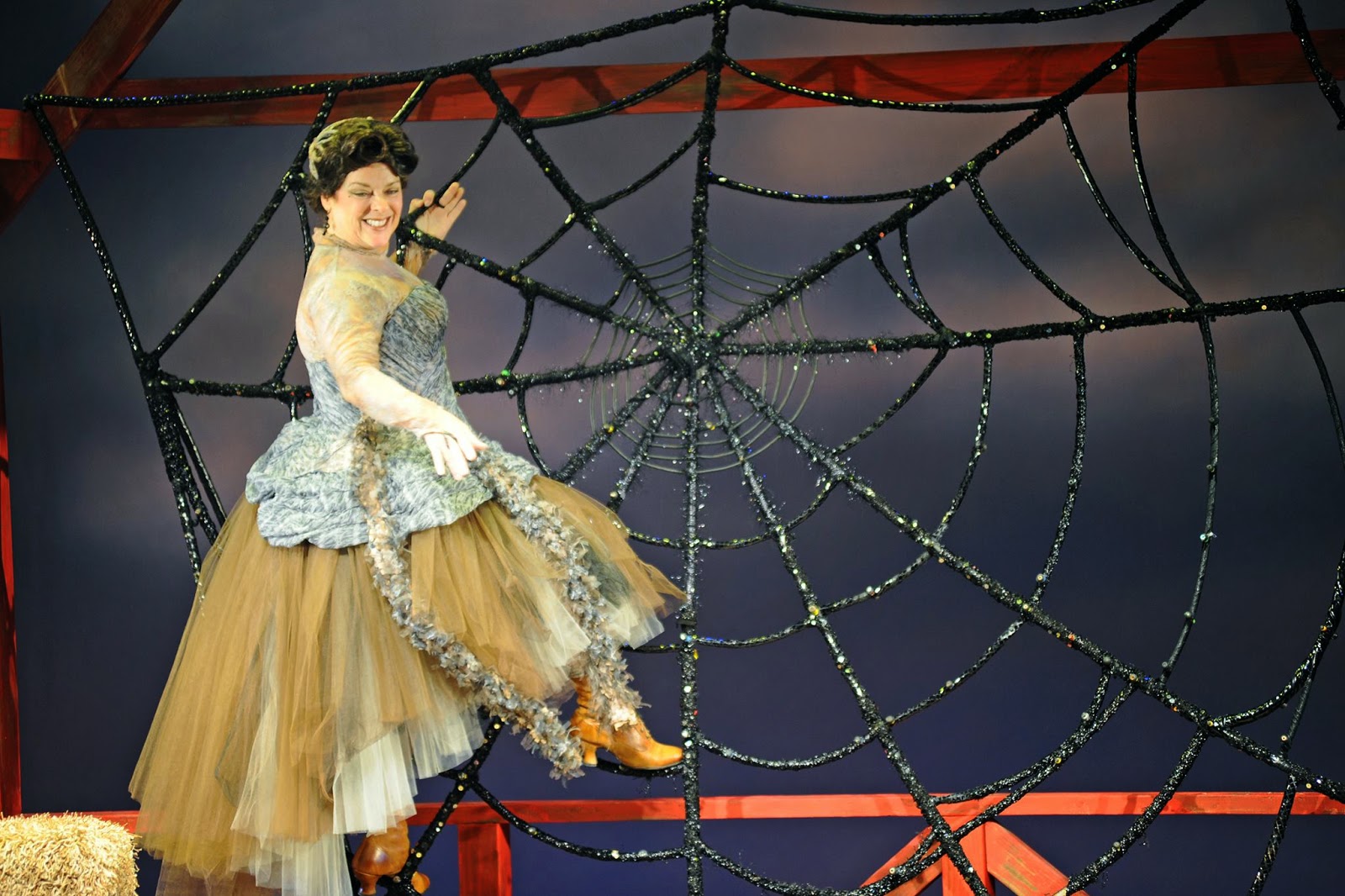


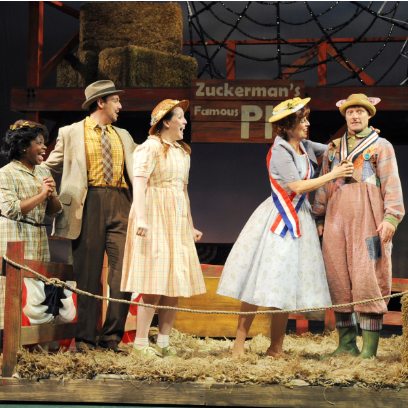
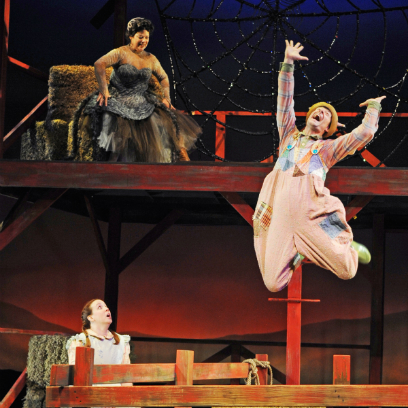
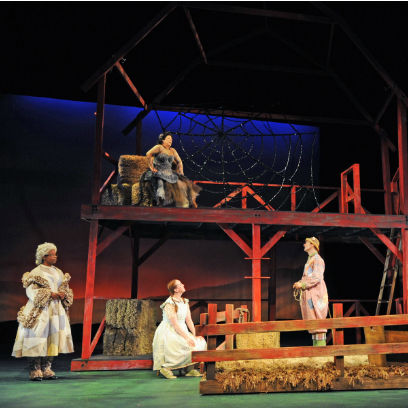
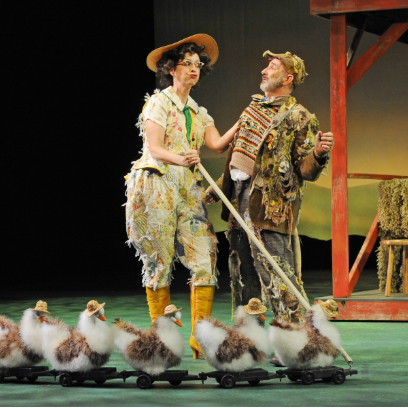
Facebook Comments.
Danny Karapetian. In a few minutes, we’ll be stepping onstage for the final time at the Tempe Center for the Arts, for Childsplay’s production of Charlotte’s Web. Jon, Drew, Anthony, Kyle, Yolanda, Debra, Kate, Katie, Kristen, Sarah, Jodie, and everyone else involved… it’s been an absolute joy and honor. To many future successes and times together. I love and will miss you all.
Awards & Honors
2012
The Helios Foundation awards Childsplay a substantial grant to implement its Early Youth Educators at Play (Eye-Play) program in pre-school classrooms throughout the greater Phoenix area. The program introduces pre-school teachers to experiential learning techniques that encourage literacy learning for 3 to 5 year olds.
2008
Childsplay receives a “Think It” grant from Theatre Communications Group to create new ways to build scenery that is more environmentally friendly.
2007
Childsplay receives the Tempe Chamber of Commerce’s Business Excellence Award.
2006
Childsplay receives a four-year $1 million grant from the U.S. Department of Education to implement, evaluate, and disseminate a model for integrating theatre arts across the middle school curriculum.
2006
Childsplay performs its world premiere production of Tomas and the Library Lady for First Lady Laura Bush at the Guadalupe Boys & Girls Club. The play was also invited to the national conference of the American Library Association.
2005
The play Eric and Elliot – written by Childsplay Associate Artist Dwayne Hartford and premiered at Childsplay – receives the Distinguished Play of the Year Award from the American Alliance of Theatre and Education.
2002
David Saar receives the Arizona State University Herberger College of Fine Arts Notable Achievement Award.
2001
Childsplay receives the Arizona Governor’s Arts Award for Arts-in-Education
2000
American Theatre magazine names Childsplay one of the top four theatre companies for young audiences in the United States.
2000
The play And Then They Came for Me receives the Shofar Zakhor Award of the Phoenix Holocaust Survivors Association.
1999
Childplay is named the United States nominee for the President’s Award of ASSITEJ, the International Organization for Theatre for Young Audiences.
1998
David Saar receives the Distinguished Play Award from the American Alliance for Theatre and Education for his play The Yellow Boat.
1996
Achieved Basic Aid status with the Arizona Commission on the Arts, as one of the ten leading arts organizations in Arizona.
1995
Childsplay was named Arts Organization of the Year by the Phoenix Business Volunteers for the Arts.
1994
The Yellow Boat, was recognized at the Best Production for Children, Best Production of a New Work, Best Script by an Arizona Playwright, and Dwayne Hartford Best Male Supporting Performance, by the Greater Phoenix Theater Critics Circle awards
1992
Received one of the first eight grants awarded nationally by the Lila Wallace/Readers Digest Fund for theatre for young audiences to create the new play Hush: An Interview with America.
1992
David Saar receives Phoenix Futures Forum’s “Dream Weavers” Vision Award
1991
David Saar receives Distinguished Achievement Award from Arizona State University’s College of Fine Arts
1991
Childsplay performs The Masquerade of Life/La Mascarada de la Vida at the John F. Kennedy Center for the Performing Arts, Washington, DC
1991
David Saar receives the National Winifred Ward “Dare to Dream” Fellowship for creating his original play, The Yellow Boat. The play was also the first time Childsplay is represented at the New Visions/New Voices Playwriting Development program, John F. Kennedy Center for the Performing Arts, Washington, DC
1989
David Saar receives Arizona Governor’s Arts Award for his contributions to the arts in Arizona.
1988
Senators’ Cultural Award, East Valley Cultural Alliance, for contributions to assure audiences today and for the future.
1986
Childsplay receives Special Recognition Citation from American Association of Theatre for Youth for continued excellence and effectiveness in the field of children’s theatre.
1981
Children’s Theatre Association of America presents Childsplay its award for Outstanding New Children’s Theatre Company Award.
